Alphabet Fun~Imagination from A to Z!
Logic will get you from A to B. Imagination will take you everywhere.
~Albert Einstein
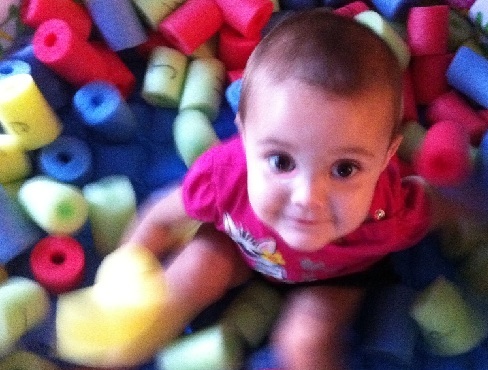 Imagination is the language of childhood, so speaking their language when introducing our language only makes sense. Let’s ditch the flashcards, turn off the educational dvd’s, and throw out the worksheets because learning is child’s play!
Imagination is the language of childhood, so speaking their language when introducing our language only makes sense. Let’s ditch the flashcards, turn off the educational dvd’s, and throw out the worksheets because learning is child’s play!
In Fun with Funoodles we cut up a bunch of foam pool noodles and wrote letters on them for all sorts of funoodley fun!
Alphabet Fishing is a fun game that can be used to introduce letters, match upper and lower cases, work on beginning sounds, build words, and more!
Fill a bathtub or a bucket with a few inches of water (Supervise, supervise, supervise! Never leave a young child alone with even an inch of standing water, not even for a minute!), tie a string to a small plastic rod, and attach a piece of metal to the other end of the string, and then you can play games like:

Catch the Letters
For letter introduction, choose the letters in your child’s name or 3 to 5 random letters and toss them in the tub, then let them ‘catch’ whatever their pole lands on and name it for them. An alternative is to name a letter for them to catch and play ‘hot-n-cold’ until they get it, or show them a letter on a card and have them catch the matching letter.
Catch and Match
For upper and lowercase matching, put a few capital or lowercase letters in the tub and line up their matches beside the tub and let them ‘catch and match’ them. (We call the uppercase letters the ‘Mommy’ letters and the lowercase letters the ‘Baby’ letters, and when the Baby letters fall in the water, my little ones love to come to the rescue and reunite them with their Mommy letters!)
Sounders
Find pictures of things with the first letters you are working on (like a picture of a dog for D and a cat for C, etc) and either cut them out yourself or let your little one do it if they like to cut (it doesn’t have to be perfect and it’s great practice!), then put the letters under the picture except for the first letters (or vowels if they’re beyond beginning sounds) and toss the missing letters in the tub. Help your child make the sound that completes the word and identify which letter makes that sound, them let them catch it and put it in place.
 For sunshiny days, head outside with some sidewalk chalk and a few other odds-n-ends because a ton of learning fun can be had in the sun!
For sunshiny days, head outside with some sidewalk chalk and a few other odds-n-ends because a ton of learning fun can be had in the sun!
Alpha-Toss
Write out a few of the letters you’re working on or just the letters in your little one’s name. Get a small rock or beanbag and let your child have fun throwing it onto the letters you call out or get a toy truck and let your child try to roll it just hard enough to get it to come to a stop on the right letter.
 Alphabet Hop-Scotch
Alphabet Hop-Scotch
Have your little one hop, skip, and jump their way through a maze of alphabet letters drawn in sidewalk chalk, calling out each letter as they land on it. Or write the letters you’re working on mixed in with other letters or just random shapes and have them jump over and around the wrong boxes to get to the right ones.
Wordfind
Draw a big wordfind box on the sidewalk with words ‘hidden in plain sight’ (i.e. all of the words hidden horizontally). For earlier learners use no more than a four letter by four letter box, and for slightly older learners use a six by six letter box. Write the words they’re looking for right beneath the box for easy reference.
Wooden blocks with just one letter on them are ideal, but magnetic or foam letters will work, too. Take the letters of your child’s name or another small group of letters and hide them in your yard (or inside your house if the weather is bad). Play ‘hot-n-cold’ to help your child find the letters and have them call out the letter names as they find them.
Build-A-Word
Write a word on the sidewalk and hide the letters to the word around the yard. As your child finds each letter, they run back and put the letter on top of the chalk letter until they’ve built the word.
I-Spy-Alphabet
Hide letters around the yard and give your child clues in I-Spy form (i.e. “I spy with my little eye a letter hidden under something blue!”)
Circle of Words
Use sidewalk chalk to write action words like ‘spin’ and ‘sing’ and ‘clap’ in a big circle, then either read them to your child or help them sound them out, depending on their reading level. Grab a camera and click away as they spin and sing and clap their way to reading! 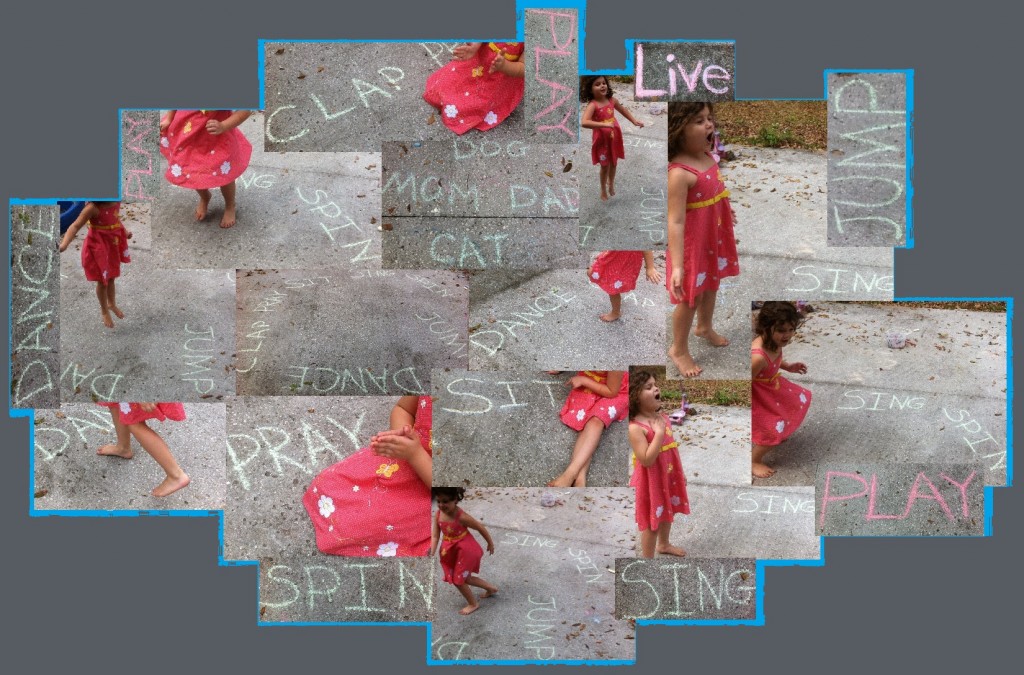
For days when going outdoors just isn’t an option, here are a few ideas to keep the learning fun and fresh:
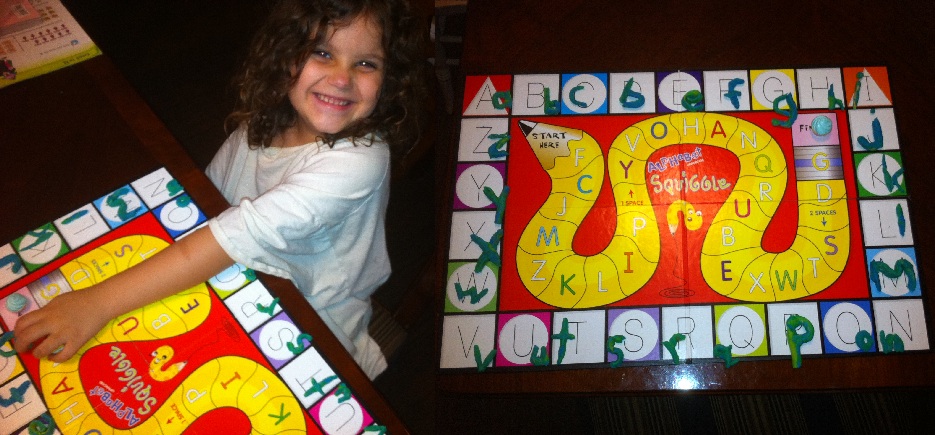 ABC Playdoh Matching
ABC Playdoh Matching
I found an old board game with no game pieces at a yard sale for 10 cents. It had the letters of the alphabet in all capitals, though, so I knew it would make a good DIY game of some sort. We used it as a fun review of the ‘mommy’ letters and the ‘baby’ letters by grabbing some playdoh and making it a matching game! The tactile use of playdoh to make the baby letters is a wonderful reinforcement of their shape, helping little learners to remember them far better than simply looking at them or writing them.
And when your little learner is ready to read, here are some word family activities that they may enjoy:
Fashion Friends Word Family
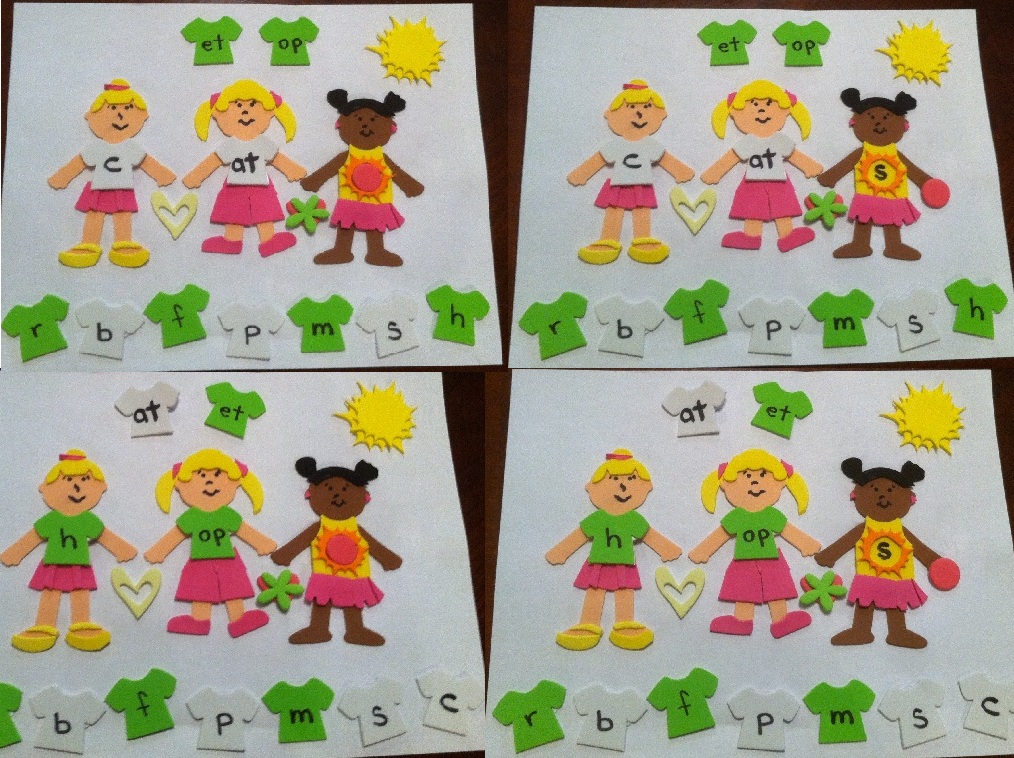 These little bff’s are mini fashionistas who love to coordinate their clothes so they make a statement everywhere they go! Little Miss Middle chooses which word family shirt to wear, then Little Miss Left chooses a shirt with a letter that makes a word, and, when there are more than one of anything, Little Miss Right reveals her ‘S’uperpower…she gets ‘S’o ‘S’uper excited she becomes ‘S’upergirl and makes the word plural with her ‘S’uper ‘S’! (These are just foam sticker people from Michael’s I cut up and made into the Fashion Friends. Check back next week for the Superhero Friends C, S, T, W, P, and H as they conquer the alphabet universe and use their superpowers to create new sounds that are out of this world!)
These little bff’s are mini fashionistas who love to coordinate their clothes so they make a statement everywhere they go! Little Miss Middle chooses which word family shirt to wear, then Little Miss Left chooses a shirt with a letter that makes a word, and, when there are more than one of anything, Little Miss Right reveals her ‘S’uperpower…she gets ‘S’o ‘S’uper excited she becomes ‘S’upergirl and makes the word plural with her ‘S’uper ‘S’! (These are just foam sticker people from Michael’s I cut up and made into the Fashion Friends. Check back next week for the Superhero Friends C, S, T, W, P, and H as they conquer the alphabet universe and use their superpowers to create new sounds that are out of this world!)
Note: As long as your child is having fun, meaningful learning is taking place. But when frustration begins to surface (whining, refusing to cooperate, complaining, etc.) take that as your cue to take a break or make some silly new game rules or let your child take the lead and make up some new games. You never know what you might learn!
Related posts:
25 Must-Have Books for Baby Bookworms
25 Must-Have Books for Toddler Bookworms
Making Money Matters Make Cents
January 25, 2012 | Categories: homeschooling, literacy, preschooler, reading, toddler | Tags: childhood, children, homeschooling, nature, outdoors, parenting, play, preschoolers, toddler | 8 Comments »  Award-winnning author, L.R.Knost, is the founder and director of the children's rights advocacy and family consulting group, Little Hearts/Gentle Parenting Resources, and Editor-in-Chief of Holistic Parenting Magazine. Books by L.R.Knost include Whispers Through Time: Communication Through the Ages and Stages of Childhood ; Two Thousand Kisses a Day: Gentle Parenting Through the Ages and Stages ; The Gentle Parent: Positive, Practical, Effective Discipline ; and Jesus, the Gentle Parent: Gentle Christian Parenting the first four books in the Little Hearts Handbook gentle parenting series, and children’s picture books Petey’s Listening Ears and the soon-to-be-released Grumpykins series.
Award-winnning author, L.R.Knost, is the founder and director of the children's rights advocacy and family consulting group, Little Hearts/Gentle Parenting Resources, and Editor-in-Chief of Holistic Parenting Magazine. Books by L.R.Knost include Whispers Through Time: Communication Through the Ages and Stages of Childhood ; Two Thousand Kisses a Day: Gentle Parenting Through the Ages and Stages ; The Gentle Parent: Positive, Practical, Effective Discipline ; and Jesus, the Gentle Parent: Gentle Christian Parenting the first four books in the Little Hearts Handbook gentle parenting series, and children’s picture books Petey’s Listening Ears and the soon-to-be-released Grumpykins series.
If You Give A Toddler A Book…
[By L.R.Knost, author of Two Thousand Kisses a Day: Gentle Parenting Through the Ages and Stages, Whispers Through Time: Communication Through the Ages and Stages of Childhood, and The Gentle Parent: Positive, Practical, Effective Discipline available on Amazon and through other major retailers.]
~~~~~~~~~~~~~~~~~~~~~
He’ll climb into your lap
While he’s in your lap
He might lay his head on your chest
When he lays his head on your chest
He’ll hear your heartbeat
When he hears your heartbeat
He’ll probably ask if you can hear his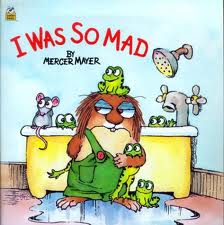
When you lean down to listen
He might kiss your nose
When he kisses your nose
You could tickle his tummy
When you tickle his tummy
He might giggle and wiggle
When he giggles and wiggles
When you hug him tight
He’ll smile like the sun
When he smiles like the sun
You’ll smile right back
When you smile right back
He might tell you he loves you
When he tells you he loves you
You’ll whisper it back
He’ll probably snuggle close
When he snuggles close
He might ask you to read to him
When he asks you to read to him
You’ll read him the book
When you read him the book
He might just learn to love…
To learn!
~L.R.Knost
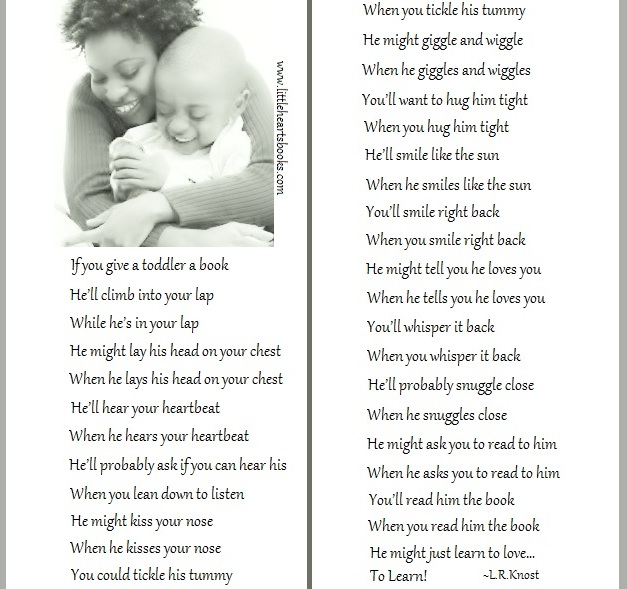 Related posts:
Related posts:
25 Must-Have Books for Baby Bookworms
25 Must-Have Books for Toddler Bookworms
Alphabet Fun~Imagination From A to Z!
Live to Play~Play to Learn~Learn to Live!
Making Money Matters Make Cents
Playground Confessions~Look Who’s Talking!
One Slippery Sock & Other Silly Tools for your Parenting Toolbox!
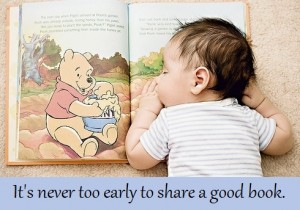
January 23, 2012 | Categories: books, children's books, communication, family, literacy, preschooler, reading, toddler | Tags: books, childhood, children, children's books, literacy, parenting, preschoolers, reading, toddler | 32 Comments »  Award-winnning author, L.R.Knost, is the founder and director of the children's rights advocacy and family consulting group, Little Hearts/Gentle Parenting Resources, and Editor-in-Chief of Holistic Parenting Magazine. Books by L.R.Knost include Whispers Through Time: Communication Through the Ages and Stages of Childhood ; Two Thousand Kisses a Day: Gentle Parenting Through the Ages and Stages ; The Gentle Parent: Positive, Practical, Effective Discipline ; and Jesus, the Gentle Parent: Gentle Christian Parenting the first four books in the Little Hearts Handbook gentle parenting series, and children’s picture books Petey’s Listening Ears and the soon-to-be-released Grumpykins series.
Award-winnning author, L.R.Knost, is the founder and director of the children's rights advocacy and family consulting group, Little Hearts/Gentle Parenting Resources, and Editor-in-Chief of Holistic Parenting Magazine. Books by L.R.Knost include Whispers Through Time: Communication Through the Ages and Stages of Childhood ; Two Thousand Kisses a Day: Gentle Parenting Through the Ages and Stages ; The Gentle Parent: Positive, Practical, Effective Discipline ; and Jesus, the Gentle Parent: Gentle Christian Parenting the first four books in the Little Hearts Handbook gentle parenting series, and children’s picture books Petey’s Listening Ears and the soon-to-be-released Grumpykins series.
The Great Santa Claus Debate
[Excerpt reprinted from Jesus, the Gentle Parent: Gentle Christian Parenting by L.R.Knost. Two Thousand Kisses a Day: Gentle Parenting Through the Ages and Stages; Whispers Through Time: Communication Through the Ages and Stages of Childhood; and The Gentle Parent: Positive, Practical, Effective Discipline also available on Amazon and through other major retailers.]
~~~~~~~~~~~~~~~~~~~~~
 St.Nicholas was just a man, but he was a man with a mission. Born in the third century, he grew up to be an intensely kind-hearted man who was especially devoted to children’s issues and helping the poor. He was a Greek Bishop who defied the established Church in order to go out among the ‘unwashed masses’ and live his life as the ‘heart and hands of Jesus.’ While many miracles and legends about him evolved through the centuries, his penchant for leaving secret gifts is the one that captured the hearts and imaginations of people world-wide, leading to the present-day legend of Santa Claus.
St.Nicholas was just a man, but he was a man with a mission. Born in the third century, he grew up to be an intensely kind-hearted man who was especially devoted to children’s issues and helping the poor. He was a Greek Bishop who defied the established Church in order to go out among the ‘unwashed masses’ and live his life as the ‘heart and hands of Jesus.’ While many miracles and legends about him evolved through the centuries, his penchant for leaving secret gifts is the one that captured the hearts and imaginations of people world-wide, leading to the present-day legend of Santa Claus.
I, like many new parents, struggled with the idea of perpetuating a ‘false belief’ and thus undermining my children’s trust. But then I turned to the Bible and saw how Jesus, who spoke absolute truth always, often spoke that truth in stories. He knew something about people’s hearts that I needed to learn as a young parent. He knew that the human mind is logic, analysis, reason, and that the human heart is imagination, creativity, love. He knew that sometimes you have to bypass people’s minds and speak straight to their hearts, those well-springs of wonder, for true understanding to occur and that often the deepest truths are the ones that are too big for the human mind to receive and can only be grasped by the heart.
When it comes to the breathtaking gift of the Christ-Child, the Eternal Creator born of a woman, God Himself wrapped in swaddling clothes, the I AM in a manger, what better way to share such an absurd and immense truth than Jesus’ way…with a story? How else would my little ones be able to grasp the concept of such a gift?  How would they embrace the wonder? How could I possibly break down the impossible into a pedantic lecture? Would the improbable make more sense in a dissertation?
How would they embrace the wonder? How could I possibly break down the impossible into a pedantic lecture? Would the improbable make more sense in a dissertation?
And so I chose the way of the parable. I embraced Christmas in all its glory, decorated and baked and showered my little ones with gifts, all while sharing the story of the birth of a Baby. Woven through every event, every tradition, every memorable moment of our family’s Christmas, is the celebration of the wondrous gift of a Savior. We watch Rudolph the Red-Nosed Reindeer, Santa Claus is Coming to Town, and all the other fun Christmas shows together. We read bedtime stories about Christmas elves and magical toys and talking animals. And when my children ask me if Santa really exists, I tell them yes, because it’s true. Every parent who carries on St. Nicholas’ tradition of leaving secret gifts, of being the heart and hands of Jesus, of sharing the wonder, excitement, and glory of the most extraordinary Gift ever given to mankind, every one of us is Santa Claus.
My children never outgrow their belief in Santa. When they’re ready we simply share the beautiful story of St. Nick and invite them to join us in the fun of becoming Santa for their younger siblings and for children in need in our community. They still get presents, of course, but they also get to experience a new facet of the wonder of Christmas through the excitement of secret-keeping and present-wrapping and plan-making and joy-giving. Becoming Santa is an exciting and wonder-filled experience for our children, a step toward adulthood that makes them feel like they’ve been entrusted with a wonderful secret and gives them an opportunity to experience the incredible joy of generosity.
Note: I don’t ever use Santa Claus as a threat (i.e. “I’m calling Santa right now if you don’t…” or “Santa’s watching, and you won’t get any presents for Christmas if…”) first because a parable’s purpose is to teach, not to manipulate or control, and second because what I am teaching is the wonder and miracle of receiving a free gift, one that can’t be earned because it is freely given. Manipulating my children into ‘performing’ might work temporarily, but am I really trying to raise works-driven Christians, or am I trying to teach my little people about the wonderful gift of grace?
Here are some of the ways we focus on Jesus for Christmas:
Children learn best and most happily through play, so letting my little people ‘play Santa’ (i.e. wrapping up their toys and ‘surprising’ each other, making ornaments and delivering them to a nursing home, shopping at the dollar store for Operation Christmas Child, etc.) is a very important part of our Christmas traditions. And the best part is…they’re playing Santa for Jesus!
Leading up to Christmas, we marvel about how Jesus loves us so much He wants us to get presents on His birthday (truly awe-inspiring to children and a lesson in sacrificial giving!) because all He wants for His birthday are smiles and happy hearts.
Then we brainstorm ways to give Jesus as many ‘birthday presents’ as possible (a lesson in generosity). We work together to share Christmas cheer with everyone we meet, but focus our best efforts on the grumpiest people because they don’t smile as often and so their smiles make really special gifts for Jesus (a lesson in unconditional love).
We have a 12 Days of Christmas tradition where everyone gets a small present (chocolate, a special pencil, etc), and we read Christmas picturebooks every evening, building excitement for the Christmas morning celebration of the BEST GIFT EVER!
On Christmas Eve, we go to a special church service and then, after celebrating Christmas with family, we go home and make a fire in the fireplace (in Florida weather!) and make s’mores and hot chocolate and read the story of Jesus’ birth from Luke.
Then, on Christmas morning, we have a ‘Happy Birthday, Jesus’ party before opening presents, complete with a birthday cake and candles and singing ‘Happy birthday to Jesus!’
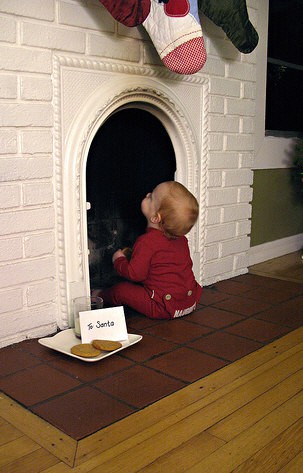
Here are some other resources on making the meaning of Christmas central to your celebrations this year (I’ll be adding more as I find them):
Celebrating Jesus with a Santa Claus Christmas
24 Tips for a Safe, Stress-Free & Jolly Holiday… A Very Toddler Christmas
7 Tips and Traditions to Make Giving a Standard of Living
What traditions does your family have to keep Christ in Christmas? Share them in the comment section!

December 5, 2011 | Categories: Advent, Bible, books, children's books, Christian, Christian parenting, Christmas, family, Jesus, Santa Claus, St. Nicholas, traditions | Tags: bedtime stories, Bible, childhood, children, children's books, Christian children's books, Christian parenting, Jesus, parenting, play, sacrifice, Santa Claus, St. Nicholas, traditions | 19 Comments »  Award-winnning author, L.R.Knost, is the founder and director of the children's rights advocacy and family consulting group, Little Hearts/Gentle Parenting Resources, and Editor-in-Chief of Holistic Parenting Magazine. Books by L.R.Knost include Whispers Through Time: Communication Through the Ages and Stages of Childhood ; Two Thousand Kisses a Day: Gentle Parenting Through the Ages and Stages ; The Gentle Parent: Positive, Practical, Effective Discipline ; and Jesus, the Gentle Parent: Gentle Christian Parenting the first four books in the Little Hearts Handbook gentle parenting series, and children’s picture books Petey’s Listening Ears and the soon-to-be-released Grumpykins series.
Award-winnning author, L.R.Knost, is the founder and director of the children's rights advocacy and family consulting group, Little Hearts/Gentle Parenting Resources, and Editor-in-Chief of Holistic Parenting Magazine. Books by L.R.Knost include Whispers Through Time: Communication Through the Ages and Stages of Childhood ; Two Thousand Kisses a Day: Gentle Parenting Through the Ages and Stages ; The Gentle Parent: Positive, Practical, Effective Discipline ; and Jesus, the Gentle Parent: Gentle Christian Parenting the first four books in the Little Hearts Handbook gentle parenting series, and children’s picture books Petey’s Listening Ears and the soon-to-be-released Grumpykins series.
A Craft-astic Holiday or One Craft-aster After Another (and loving it!)
This is for all you mamas who see the creative projects and crafts and cute baking on Pinterest and wish you were the kind of ‘crafty mama’ who could whip together such adorableness for your little ones. I, too, wish I was a crafty mama and have pinned so many great ideas and tried a few with…let’s just say less-than-stellar results, lol. But my children have loved every flub, giggled at every failure, and laughed their way through every project regardless of the results. There’s joy in the journey, mamas, so take heart and grab some of these ideas and flub and fail your way to a happy, craft-astic holiday!
Here’s a project that didn’t turn out as intended. (From the creative genius Play at Home Mom, who made a beautifully flat and festively decorated ice rink which mine doesn’t remotely resemble, haha. Head over to her site for some really great ideas!)
But, even though my ice rink somehow ended up with a mysterious growth, my little people loved it just the same. In fact, they really enjoyed the ice mountain (aka ‘growth’) and used it for some Florida sledding!
And here are some other ideas I’m planning to ruin, er…try out for some Christmas fun!
This site has some really cute Advent ideas for using picture books!
~And these cute ideas are from Pinterest!~
My most recent craft-aster: setting Christmas gifts on fire last night! So, fyi, coffee beans are flammable (who knew?). The candle needs to be in a glass votive and high enough out of the coffee so the beans won’t fall in and catch fire. Mine didn’t even vaguely resemble the adorable ones pictured below (pre or post fire, lol), so click on the picture to get instructions if you want to make them!
December 1, 2011 | Categories: Advent, bookish, books, children's books, Christmas, family, food, life, pinterest | Tags: Advent, bedtime stories, childhood, children, children's books, Christmas, crafts, family, food, Pinterest, play | 2 Comments »  Award-winnning author, L.R.Knost, is the founder and director of the children's rights advocacy and family consulting group, Little Hearts/Gentle Parenting Resources, and Editor-in-Chief of Holistic Parenting Magazine. Books by L.R.Knost include Whispers Through Time: Communication Through the Ages and Stages of Childhood ; Two Thousand Kisses a Day: Gentle Parenting Through the Ages and Stages ; The Gentle Parent: Positive, Practical, Effective Discipline ; and Jesus, the Gentle Parent: Gentle Christian Parenting the first four books in the Little Hearts Handbook gentle parenting series, and children’s picture books Petey’s Listening Ears and the soon-to-be-released Grumpykins series.
Award-winnning author, L.R.Knost, is the founder and director of the children's rights advocacy and family consulting group, Little Hearts/Gentle Parenting Resources, and Editor-in-Chief of Holistic Parenting Magazine. Books by L.R.Knost include Whispers Through Time: Communication Through the Ages and Stages of Childhood ; Two Thousand Kisses a Day: Gentle Parenting Through the Ages and Stages ; The Gentle Parent: Positive, Practical, Effective Discipline ; and Jesus, the Gentle Parent: Gentle Christian Parenting the first four books in the Little Hearts Handbook gentle parenting series, and children’s picture books Petey’s Listening Ears and the soon-to-be-released Grumpykins series.
30 Days of Thankfulness~Day 23~Little Chefs!
I am thankful for little chefs!

November 23, 2011 | Categories: family, food | Tags: childhood, food, parenting, play | 1 Comment »  Award-winnning author, L.R.Knost, is the founder and director of the children's rights advocacy and family consulting group, Little Hearts/Gentle Parenting Resources, and Editor-in-Chief of Holistic Parenting Magazine. Books by L.R.Knost include Whispers Through Time: Communication Through the Ages and Stages of Childhood ; Two Thousand Kisses a Day: Gentle Parenting Through the Ages and Stages ; The Gentle Parent: Positive, Practical, Effective Discipline ; and Jesus, the Gentle Parent: Gentle Christian Parenting the first four books in the Little Hearts Handbook gentle parenting series, and children’s picture books Petey’s Listening Ears and the soon-to-be-released Grumpykins series.
Award-winnning author, L.R.Knost, is the founder and director of the children's rights advocacy and family consulting group, Little Hearts/Gentle Parenting Resources, and Editor-in-Chief of Holistic Parenting Magazine. Books by L.R.Knost include Whispers Through Time: Communication Through the Ages and Stages of Childhood ; Two Thousand Kisses a Day: Gentle Parenting Through the Ages and Stages ; The Gentle Parent: Positive, Practical, Effective Discipline ; and Jesus, the Gentle Parent: Gentle Christian Parenting the first four books in the Little Hearts Handbook gentle parenting series, and children’s picture books Petey’s Listening Ears and the soon-to-be-released Grumpykins series.
Gentle Discipline Resource Guide
[Portions reprinted from The Gentle Parent: Positive, Practical, Effective Discipline by L.R.Knost available November 2013; Two Thousand Kisses a Day: Gentle Parenting Through the Ages and Stages and Whispers Through Time: Communication Through the Ages and Stages of Childhood now available on Amazon.]
 Many people believe that gentle parenting is a form of unparenting, but nothing could be further from the truth. Gentle parenting is involved parenting ~interactive, engaged, active parenting. It takes focused attention, planning, participation, research, and so much more to be an empathetic, responsive parent who is in tune with their child’s needs and who is prepared to make whatever sacrifices are necessary to meet those needs. That said, in any home, like in any civilized society, boundaries are necessary for everyone’s safety and comfort. It is in the choosing and enforcing of those boundaries that gentle parenting distinguishes itself. In a gently parented home, boundaries are focused on guiding rather than controlling children and are enforced through empathetic and creative resolutions rather than harsh punitive consequences. If you’d like to transition to a more gentle mode of parenting, but don’t know where to start, below are links to alternatives to punishment, and here is a guide to help you set yourself up for success in your journey to gentle parenting…12 Steps to Gentle Parenting.
Many people believe that gentle parenting is a form of unparenting, but nothing could be further from the truth. Gentle parenting is involved parenting ~interactive, engaged, active parenting. It takes focused attention, planning, participation, research, and so much more to be an empathetic, responsive parent who is in tune with their child’s needs and who is prepared to make whatever sacrifices are necessary to meet those needs. That said, in any home, like in any civilized society, boundaries are necessary for everyone’s safety and comfort. It is in the choosing and enforcing of those boundaries that gentle parenting distinguishes itself. In a gently parented home, boundaries are focused on guiding rather than controlling children and are enforced through empathetic and creative resolutions rather than harsh punitive consequences. If you’d like to transition to a more gentle mode of parenting, but don’t know where to start, below are links to alternatives to punishment, and here is a guide to help you set yourself up for success in your journey to gentle parenting…12 Steps to Gentle Parenting.

When Things Get Physical: Hitting, Throwing, Kicking, and Biting
The concept of using consequences, physical or otherwise, as a deterrent for hitting is based on the misconception that small children have the capacity for forethought (i.e. If I hit, I will get in trouble. Therefore I will not hit.) and that they are choosing to disobey. The fact is that the prefrontal cortex, where reasoning, logic, and forethought take place, is highly immature in toddlers and preschoolers and actually doesn’t develop fully until the mid-twenties! Small children act instinctively and impulsively even when not stressed simply because that is what they are developmentally capable of, but when they are stressed even the small amount of self-control they may have attained flies right out the window, and before they know it (literally!) they’ve reacted physically to their stress. Read more
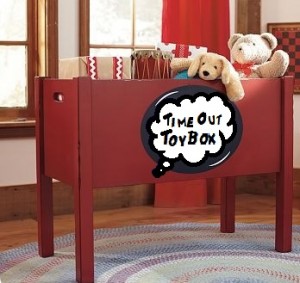 Testing the Boundaries~What’s a Parent to Do?
Testing the Boundaries~What’s a Parent to Do?
Typically, I advise parents to use Time-Ins instead of Time-Outs in order to connect-to-correct, but there is one area that I advise the use of Time-Outs…the ‘Time-Out Toy Box!’ When a toy is misused (i.e. thrown, used to hit, drawn on, fought over, etc) and a gentle redirection has been given, the next step for the toy is to be put in the ‘Time-Out Toy Box.’ Little ones generally find the concept of a toy being put in Time-Out rather humorous and go along with the removal without a fuss (the toy can be returned after an exaggeratedly stern warning to the toy letting it know what is expected of it and that it must listen to ‘the boss’ ~the child, lol. They love that!), but remember to communicate, listen, and be flexible. If the removal of a toy brings about a strong negative response, it may be that the inappropriate behavior was more than just…Read more
Few things ignite a parent’s temper like defiance. It feels like a slap in the face, a direct challenge to our authority. Power card…played. Gauntlet…thrown. Challenge…accepted?
Time out! No, not time-out as in punish your child, but time out as in hit the parental pause button, take a step back, assess the situation, and get some adult perspective.
There are three things to consider…Read more

Toddlers, Tantrums, and Time-In’s, Oh My!
Punishing them, yelling at them, sending them to their room, or putting them in time-out disconnects them even further from their source of security and not only delays a resolution of the issue, but misses an opportunity to equip them with the tools they need to handle future problems.
One effective tool for use in helping little ones cope with big emotions is a Calm-Me-Jar…Read more
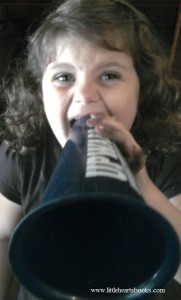
Parenting a Strong-Willed Child
There are some children who are born into the world with the incredible life-gift of a strong will and an indomitable spirit. These children are often deeply misunderstood, and there are rows of books lining bookstore shelves with instructions about how to break their will, how to subdue their spirit, how to force their obedience. What an incredible loss of leadership, passion, and insight this world suffers when parents follow these punitive parenting practices. Not only can we parent these gifted children with gentleness and respect, but the gifts we get in return are priceless! …Read more
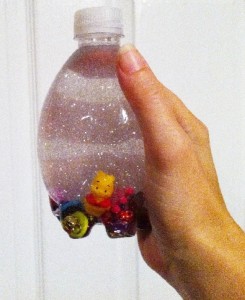 Easy Peasy DIY Parenting Tools
Easy Peasy DIY Parenting Tools
I-spy Water Jars, Quiet Bags, Calm-Me-Jars, Cozy Corners, Punch Bags, and more…Read more
 To a Toddler Sharing is a 4 Letter Word~MINE!
To a Toddler Sharing is a 4 Letter Word~MINE!
Almost from the moment a baby is born, parents teach them not to share. “No, no, sweetie. That’s mommy’s” and “That’s daddy’s, not yours” accompanied by the removal of whatever the forbidden item is are daily realities for little ones. This is unavoidable, of course, since bacteria-ridden keys don’t belong in little mouths and iphones don’t work well when soaked in drool.
But the challenge comes when our little ‘reflectors’ are expected to share their toys with anyone and everyone who takes a liking to them…Read more
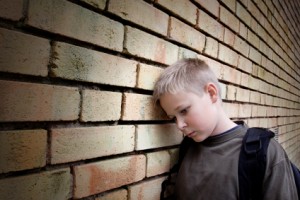 Spare the Rod: The Heart of the Matter
Spare the Rod: The Heart of the Matter
One of the hot-button issues when it comes to discipline and children is spanking, and the more Christian and conservative the audience, the more hot the debate becomes! There are no verses in the New Testament that support spanking, flogging, whipping, or otherwise hitting children. In the Old Testament there are…Read more
 Your Baby isn’t Trying to Annoy You; He’s Trying to Communicate! From the moment a child enters the world, they are trying to communicate. Crying, grunting, making eye contact, mirroring expressions, all of these things are the instinctive tools built into infants to reach out into a brand new world and make contact. They can do no more. It is entirely up to the parent to make the connection, to respond, to build those all-important ‘lines of communication’ that will be so vitally important to parents in later childhood. Communication is not something that just happens. It is not something that begins when a child becomes verbal, and it’s not a product of a child’s advancing maturity. Communication is a process, a relational building block, a result of intentional and responsive parenting. Read more
Your Baby isn’t Trying to Annoy You; He’s Trying to Communicate! From the moment a child enters the world, they are trying to communicate. Crying, grunting, making eye contact, mirroring expressions, all of these things are the instinctive tools built into infants to reach out into a brand new world and make contact. They can do no more. It is entirely up to the parent to make the connection, to respond, to build those all-important ‘lines of communication’ that will be so vitally important to parents in later childhood. Communication is not something that just happens. It is not something that begins when a child becomes verbal, and it’s not a product of a child’s advancing maturity. Communication is a process, a relational building block, a result of intentional and responsive parenting. Read more
 Tots to Teens~Communication through the Ages and Stages
Tots to Teens~Communication through the Ages and Stages
The evolution of children’s communication proceeds at a steady and relatively predictable pace, though the timing is influenced by factors such as individual personality, cognitive development, home environment, etc. Here’s what to expect through the ages and stages…
 Babes and Boundaries~A Gentle Parenting Perspective Gentle parenting doesn’t mean parenting without boundaries! Believe it or not, the foundation for discipline (guiding, leading, teaching…NOT punishment ) begins in the newborn and infancy stages. When parents respond quickly, consistently, and gently to their baby’s cries, the trust relationship that the parent is establishing becomes the cornerstone for later discipline. Boundaries need to be established for a child’s safety and growth into a successful citizen of our world. A child who is secure in the knowledge that he doesn’t have to fight to be heard or to have his needs met is more open and adaptable to limits. And when the ‘limit-setter’ is a person the child trusts, the enforcement of those boundaries becomes a matter of connection and communication instead of conflict and struggle. So, what might setting and enforcing boundaries using gentle parenting look like in real life? Read more
Babes and Boundaries~A Gentle Parenting Perspective Gentle parenting doesn’t mean parenting without boundaries! Believe it or not, the foundation for discipline (guiding, leading, teaching…NOT punishment ) begins in the newborn and infancy stages. When parents respond quickly, consistently, and gently to their baby’s cries, the trust relationship that the parent is establishing becomes the cornerstone for later discipline. Boundaries need to be established for a child’s safety and growth into a successful citizen of our world. A child who is secure in the knowledge that he doesn’t have to fight to be heard or to have his needs met is more open and adaptable to limits. And when the ‘limit-setter’ is a person the child trusts, the enforcement of those boundaries becomes a matter of connection and communication instead of conflict and struggle. So, what might setting and enforcing boundaries using gentle parenting look like in real life? Read more
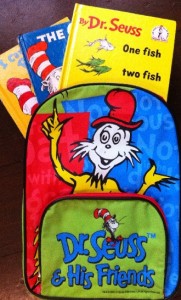 Parenting in Public~What’s in Your Quiet Bag? More and more public places are becoming child un-friendly with snarky signs saying they’ll give your child an espresso and a pony if you don’t control him or charge you extra if you dare to enter their establishment and support their business with your hard-earned money or even flat out ban you altogether if you bring ‘the beast’ out in public with you! So what’s a parent to do? Read more
Parenting in Public~What’s in Your Quiet Bag? More and more public places are becoming child un-friendly with snarky signs saying they’ll give your child an espresso and a pony if you don’t control him or charge you extra if you dare to enter their establishment and support their business with your hard-earned money or even flat out ban you altogether if you bring ‘the beast’ out in public with you! So what’s a parent to do? Read more
 Discipline & Behavior via Dr. Sears
Discipline & Behavior via Dr. Sears
You probably never thought of attachment tools, such as breastfeeding and babywearing, as being acts of discipline, but they are. Attachment parenting is like immunizing your child against emotional diseases later on. Your knowledge of your child becomes like a sixth sense enabling you to anticipate and control situations to keep your kids out of trouble. Discipline is based on building the right relationship with a child more than using the right techniques.
 Parenting toddlers made simple. via T.E.A.C.H. Through Love
Parenting toddlers made simple. via T.E.A.C.H. Through Love
Toddlers can be loud, boisterous, erratic, funny, messy, witty and smart all at the same time. They soak up everything they see and hear and that includes our reactions to their actions.
What Children Need Most When They Deserve It The Least via Happy Families
Parents prefer not to have their authority questioned. So rather than considering why a child may be resisting, they up the ante, doing their best puffer-fish impersonation, and make threats.
 Positive Parenting in Action: Exploration/Danger via Positive Parenting
Positive Parenting in Action: Exploration/Danger via Positive Parenting
Don’t mistake independence for defiance. Some toddlers are more strong-willed and independent than others. My first son was very mellow and content under my wing, while my second wanted independence early. He doesn’t want to hold my hand in parking lots (we’ll address that one!) because he says “I can walk by myself!”
With a healthy relationship based on open, honest communication, issues can be addressed as they arise and in a respectful and timely manner instead of a teen feeling the need to go ‘underground’ with their behavior or problems. Here are some practical tips for raising teens in a respectful and peaceful manner.
 Gentle Discipline: So what DO you do? via The Path Less Taken
Gentle Discipline: So what DO you do? via The Path Less Taken
Some people, for any number of reasons, do not know about alternatives. They don’t know that there’s another way. Some people want to do things differently, and want to break their cycle, but they honestly do not know where to start.
 Proactive Discipline and Well-behaved Children via Gentle Christian Mothers
Proactive Discipline and Well-behaved Children via Gentle Christian Mothers
Most people seem to think that physical punishment is the only way to elicit good behavior and assume that children who aren’t given prompt and regular spankings will be out of control “monsters”. Well, my kids are not perfect little robots. They have to be reminded to do things and they fight with each other. But my focus is not so much on obedience (do what I say right now!) as you might have expected. Instead my focus is on raising kids who are generally polite and content and care about how those around them feel. And that’s what I’ve got, kids who are noticeably considerate to adults and other children alike.
 6 Steps to Stop Yelling Dr. Laura Markham/Aha Parenting.com
6 Steps to Stop Yelling Dr. Laura Markham/Aha Parenting.com
We all know that our kids respond better if we don’t yell. Instead of escalating a difficult situation, if we can stay calm, it settles everyone else down. Our relationship with our child strengthens. They cooperate more. They start to control their own emotions more. Bottom line: How can you expect your child to control his own emotions if you don’t control yours?
 The One Thing You Can Do That Will Drastically Improve Your Interactions with Children via Real Child Development
The One Thing You Can Do That Will Drastically Improve Your Interactions with Children via Real Child Development
If there was one thing you could do differently that would drastically improve your interactions with children would you want to know? Would you like to know the key that would increase cooperation, reduce tantrums, fighting and negative behavior?
 Gems via Mothering by Grace
Gems via Mothering by Grace
This is a FAST way of making your child feel loved, valued and secure. GEMs help your kids feel affirmed and noticed, so their need to get your attention in negative ways decreases. Your energy levels will rise as you enjoy your child and remember what it’s all about. By focusing on your child and meeting their emotional needs for connection you are actually taking care of yourself at the same time. It takes only a few minutes to have a GEM, yet the positive effects last for ages.
 Why Spanking is Never Okay via Peaceful Parenting
Why Spanking is Never Okay via Peaceful Parenting
Scientific research shows that physical punishment does not work in the long run, is associated with an increased risk for many behavioral and psychological problems, and is simply unnecessary given that we have non-violent discipline techniques that are very effective.
 Gentle Discipline Toolbox via Dulce de Leche
Gentle Discipline Toolbox via Dulce de LecheGentle, effect tools for your parenting toolbox!
Related links:
November 21, 2011 | Categories: adolescence, attachment parenting, babywearing, Bible, birth, breastfeeding, children's books, Christian, Christian parenting, cosleeping, gentle discipline, gentle parenting, Jesus, parenting guide, positive discipline | Tags: adolescence, attachment parenting, babywearing, Bible, breastfeeding, childhood, children, Christian, Christian parenting, discipline, gentle discipline, gentle parenting, Jesus, newborn, parenting, play, positive, positive parenting, rebellion | 38 Comments »  Award-winnning author, L.R.Knost, is the founder and director of the children's rights advocacy and family consulting group, Little Hearts/Gentle Parenting Resources, and Editor-in-Chief of Holistic Parenting Magazine. Books by L.R.Knost include Whispers Through Time: Communication Through the Ages and Stages of Childhood ; Two Thousand Kisses a Day: Gentle Parenting Through the Ages and Stages ; The Gentle Parent: Positive, Practical, Effective Discipline ; and Jesus, the Gentle Parent: Gentle Christian Parenting the first four books in the Little Hearts Handbook gentle parenting series, and children’s picture books Petey’s Listening Ears and the soon-to-be-released Grumpykins series.
Award-winnning author, L.R.Knost, is the founder and director of the children's rights advocacy and family consulting group, Little Hearts/Gentle Parenting Resources, and Editor-in-Chief of Holistic Parenting Magazine. Books by L.R.Knost include Whispers Through Time: Communication Through the Ages and Stages of Childhood ; Two Thousand Kisses a Day: Gentle Parenting Through the Ages and Stages ; The Gentle Parent: Positive, Practical, Effective Discipline ; and Jesus, the Gentle Parent: Gentle Christian Parenting the first four books in the Little Hearts Handbook gentle parenting series, and children’s picture books Petey’s Listening Ears and the soon-to-be-released Grumpykins series.
Babies Do Not Manipulate-They Communicate
[Portions reprinted from Whispers Through Time: Communication Through the Ages and Stages of Childhood by L.R.Knost. Two Thousand Kisses a Day: Gentle Parenting Through the Ages and Stages and The Gentle Parent: Positive, Practical, Effective Discipline also available on Amazon and through other major retailers.]
~~~~~~~~~~~~~~~~~~~~~
 On a recent trip to the park, I overheard a parent ranting and raving about a little one “being a brat and always pitching fits.” It took me less than two seconds of looking at the child to realize his mother had put him down on hot asphalt without shoes on, and his ‘fit’ was actually cries of pain as he danced around trying to keep his poor little feet off the asphalt while trying to push past his mommy to get back into the car. In a few years this mother will wonder why her ten-year-old is always so sullen and silent.
On a recent trip to the park, I overheard a parent ranting and raving about a little one “being a brat and always pitching fits.” It took me less than two seconds of looking at the child to realize his mother had put him down on hot asphalt without shoes on, and his ‘fit’ was actually cries of pain as he danced around trying to keep his poor little feet off the asphalt while trying to push past his mommy to get back into the car. In a few years this mother will wonder why her ten-year-old is always so sullen and silent.
Later the same day in Wal-mart, a three-year-old asked her mommy what plastic wrap was for. The mother rolled her eyes and snapped, “For wrapping food in plastic, duh.” A few years from now, this mother will confess to a friend that she has no idea why her nine-year-old is so mouthy and rude.
Minutes later, a two-year-old riding past me in a shopping cart pointed at a toy and babbled in her cute baby language, looking at her daddy with a delighted smile. Her father ignored her first few attempts to get his attention, then finally barked, “Shut up!” without ever looking at her. In a few years this father will complain to his co-workers that his teenaged daughter never talks to him.
Communication in my son’s Tae Kwon Do classes is called, “The link between the world and me.” In the parent/child relationship, communication is entirely…hear this…entirely the responsibility of the parent. From the moment a child enters the world, they are trying to communicate. Crying, grunting, making eye contact, mirroring expressions, all of these things are the instinctive tools built into infants to reach out into a brand new world and make contact. They can do no more. It is entirely up to the parent to make the connection, to respond, to build those all-important ‘lines of communication’ that will be so vitally important to parents in later childhood. Communication is not something that just happens. It is not something that begins when a child becomes verbal, and it’s not a product of a child’s advancing maturity. Communication is a process, a relational building block, a result of intentional and responsive parenting.
world, they are trying to communicate. Crying, grunting, making eye contact, mirroring expressions, all of these things are the instinctive tools built into infants to reach out into a brand new world and make contact. They can do no more. It is entirely up to the parent to make the connection, to respond, to build those all-important ‘lines of communication’ that will be so vitally important to parents in later childhood. Communication is not something that just happens. It is not something that begins when a child becomes verbal, and it’s not a product of a child’s advancing maturity. Communication is a process, a relational building block, a result of intentional and responsive parenting.
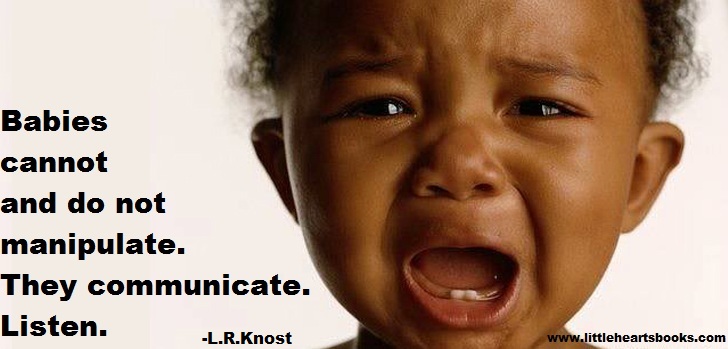 Crying is often mischaracterized as manipulation, and adults are certainly capable of using it that way. But to project such motivations on a baby is to grant them a level of skill and control far, far beyond their capabilities, and that is a potentially disastrous mistake. A parent’s perception of the motivation behind their child’s behavior is often the single most powerful determinant of the parent’s response. And the parental response or lack of response to a nonverbal child’s cries either builds or damages their communication and connection. There is no in between, no neutral.
Crying is often mischaracterized as manipulation, and adults are certainly capable of using it that way. But to project such motivations on a baby is to grant them a level of skill and control far, far beyond their capabilities, and that is a potentially disastrous mistake. A parent’s perception of the motivation behind their child’s behavior is often the single most powerful determinant of the parent’s response. And the parental response or lack of response to a nonverbal child’s cries either builds or damages their communication and connection. There is no in between, no neutral.
Babies cannot and do not manipulate. They communicate. Listen. Respond. You aren’t being manipulated. You are being a parent.
And hear this well, parents, your relationship with your teenager is being established now, while your child is still a toddler. Your discipline issues with your nine-year-old are being minimized or intensified right now, while he is reaching out to you in infancy. Preschooler’s tantrums are being moderated or exacerbated at this moment by your response or lack of response to your baby’s cries.
 And the responsibility for building communication and connection with your child doesn’t end when your child becomes verbal. There is a reason children aren’t classified as adults until they are, in fact, adults. They simply do not have the judgment, experience, or maturity of an adult. Parents, you are the center of your child’s world for many years, and they will model themselves after the example you set.
And the responsibility for building communication and connection with your child doesn’t end when your child becomes verbal. There is a reason children aren’t classified as adults until they are, in fact, adults. They simply do not have the judgment, experience, or maturity of an adult. Parents, you are the center of your child’s world for many years, and they will model themselves after the example you set.
If you listen to them, they will learn to listen. If you are rude to them, they will learn to be rude. If you treat them with respect, they will learn to be respectful. If you are angry, demanding, and harsh with them, they will learn to be angry, demanding, and harsh.
You decide every day by your parenting choices what kind of an adult you are going to raise. So live out how you want your children to turn out. That is the heart and soul of gentle, effective parenting.
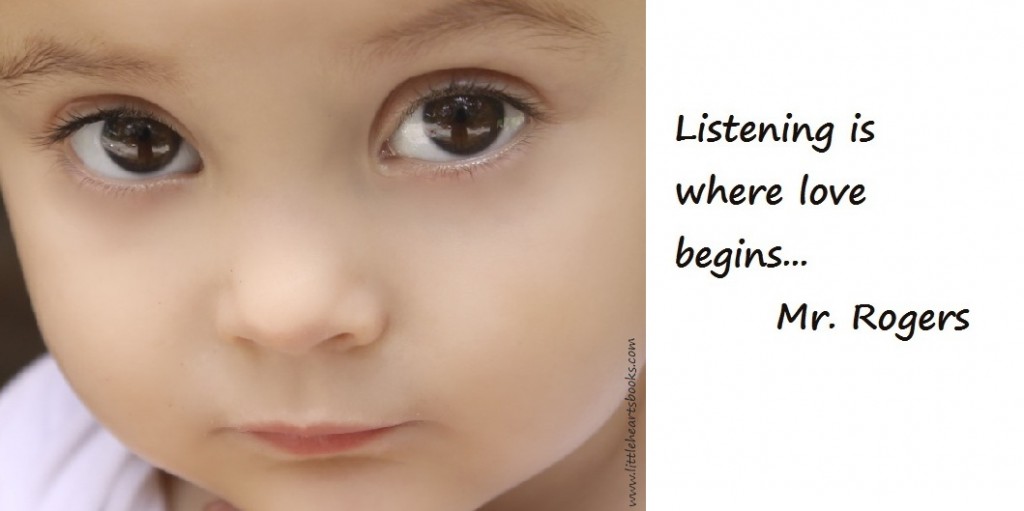
Related posts:
The Taming of the Tantrum: A Toddler’s Perspective
When Children Act Out ~ Reflecting Our Emotions
Backtalk is Communication…LISTEN
Testing the Boundaries~What’s a Parent to Do?
Toddlers, Tantrums, and Time-Ins, Oh My!
Spare the Rod: The Heart of the Matter
November 19, 2011 | Categories: adolescence, Bible, Christian parenting, communication, gentle discipline, gentle parenting, parenting guide, positive discipline, rebellion, teens | Tags: adolescence, attachment parenting, Bible, childhood, children, Christian parenting, communication, connection, gentle discipline, gentle parenting, parenting, positive parenting, rebellion, teens | 63 Comments »  Award-winnning author, L.R.Knost, is the founder and director of the children's rights advocacy and family consulting group, Little Hearts/Gentle Parenting Resources, and Editor-in-Chief of Holistic Parenting Magazine. Books by L.R.Knost include Whispers Through Time: Communication Through the Ages and Stages of Childhood ; Two Thousand Kisses a Day: Gentle Parenting Through the Ages and Stages ; The Gentle Parent: Positive, Practical, Effective Discipline ; and Jesus, the Gentle Parent: Gentle Christian Parenting the first four books in the Little Hearts Handbook gentle parenting series, and children’s picture books Petey’s Listening Ears and the soon-to-be-released Grumpykins series.
Award-winnning author, L.R.Knost, is the founder and director of the children's rights advocacy and family consulting group, Little Hearts/Gentle Parenting Resources, and Editor-in-Chief of Holistic Parenting Magazine. Books by L.R.Knost include Whispers Through Time: Communication Through the Ages and Stages of Childhood ; Two Thousand Kisses a Day: Gentle Parenting Through the Ages and Stages ; The Gentle Parent: Positive, Practical, Effective Discipline ; and Jesus, the Gentle Parent: Gentle Christian Parenting the first four books in the Little Hearts Handbook gentle parenting series, and children’s picture books Petey’s Listening Ears and the soon-to-be-released Grumpykins series.
My Little Caboose & the Very Bad, Horrible, No Good…Month :(
[Portions reprinted from Two Thousand Kisses a Day: Gentle Parenting Through the Ages and Stages by L.R.Knost. Whispers Through Time: Communication Through the Ages and Stages of Childhood; The Gentle Parent: Positive, Practical, Effective Discipline; and Jesus, the Gentle Parent: Gentle Christian Parenting also available on Amazon and through other major retailers.]
~~~~~~~~~~~~~~~~~~~~~
The things that challenge us are the very things that refine, strengthen, and grow us. Each of my children has stretched and molded and defined my parenting beliefs in their own unique way through the years. And, as is so often the case in life, it is times when I am not at my best that my children seem to need the most from me. Here is a recent ‘mommy fail’ that has reminded me of my blessings and redefined, once again, my priorities and purpose.
~~A Confession and a Challenge~~
~The Confession~
 This adorable little person has been a royal pain in the ‘caboose’ for the last few weeks. She has whined, cried, ignored direct requests, climbed on me, hung on me, played with her food, snatched things from the baby, been in my face and space incessantly, and on and on. And the more difficult she got, the more I ‘powered up’ on her. Oh, I didn’t yell or punish. No, I pulled out all my gentle parenting techniques, spoke calmly and respectfully to her, offered diversions and alternatives, read her books and provided lots of reasonable and kind council. She occasionally responded with a half-hearted attempt at cooperation or humorously declined to cooperate, but more often than not just dug in her heels and determinedly upset the normally peaceful and happy timbre of our home.
This adorable little person has been a royal pain in the ‘caboose’ for the last few weeks. She has whined, cried, ignored direct requests, climbed on me, hung on me, played with her food, snatched things from the baby, been in my face and space incessantly, and on and on. And the more difficult she got, the more I ‘powered up’ on her. Oh, I didn’t yell or punish. No, I pulled out all my gentle parenting techniques, spoke calmly and respectfully to her, offered diversions and alternatives, read her books and provided lots of reasonable and kind council. She occasionally responded with a half-hearted attempt at cooperation or humorously declined to cooperate, but more often than not just dug in her heels and determinedly upset the normally peaceful and happy timbre of our home.
And then it happened. A few nights ago, I stood in the shower listening to the goings-on outside the door (A mama’s ears are the proverbial ‘eyes in the back of her head’ you know!), and it hit me. Over and over, I heard my older children tell my little caboose, “No,” as she made one unfortunate decision after another. Over and over, I heard her whine and argue and cry. Over and over, I heard the older ones correct her, not hatefully or harshly, but repeatedly, gently, and firmly. And, over and over, I realized I was hearing myself as my older children reflected what they were seeing and hearing from me…repeated, gentle, firm correction…but no listening…none. And my heart broke. I realized that I had been parenting from a position of disconnect from my precious little caboose. Between jumping through all the hoops necessary to get a homeschooler into a pre-med university program to working with my publisher on the super slow and cumbersome process of getting my books onto store shelves, to writing an upcoming book, my busy schedule had overtaken my parenting.
my little caboose, “No,” as she made one unfortunate decision after another. Over and over, I heard her whine and argue and cry. Over and over, I heard the older ones correct her, not hatefully or harshly, but repeatedly, gently, and firmly. And, over and over, I realized I was hearing myself as my older children reflected what they were seeing and hearing from me…repeated, gentle, firm correction…but no listening…none. And my heart broke. I realized that I had been parenting from a position of disconnect from my precious little caboose. Between jumping through all the hoops necessary to get a homeschooler into a pre-med university program to working with my publisher on the super slow and cumbersome process of getting my books onto store shelves, to writing an upcoming book, my busy schedule had overtaken my parenting.

How many times had I told my little caboose “Just a minute” when she needed me? How often had that ‘minute’ stretched into an hour? How many times had my eyes strayed back to my computer screen in the middle of one of her stories about how terribly painful the invisible scratch on her pinky toe was or how pretty the light looked as it danced through the dust motes in front of the window? How often had she fallen asleep waiting, waiting, waiting for me to come and read her a bedtime story? (Oh, my mommy’s heart hurts.)
And so I took my own advice…advice I’ve given umpteen times to other mamas who were experiencing a ‘parenting disconnect.’ I took my disgruntled, whiney, clingy, disruptive child (who I felt like sending to her room just so I could get a break and to make her think about her actions and to get her behavior ‘back in line’) and I pulled her closer than close, under my mama’s wing. I took her everywhere with me. I let her sleep on a pallet next to my bed. We cooked dinner together and made a museum out of her paintings and folded towels together. And I listened and listened and listened…intentionally and thoughtfully and responsively. And my little caboose and I reconnected. In just a matter of days, life returned to its normal cadence of what we affectionately call ‘joyful chaos.’ People see the difference and ask me, “What did you do?” And I simply respond, “I listened.”
Here’s a little story to illustrate…
~The Little Caboose Who Almost Came Loose~
 The little caboose chugged along, clickety-clack, clickety-clack, happy as could be as she followed her mama engine and brother and sister cars along the tracks. Up and down hills, around curves and through tunnels they went, all strung together with their secure couplings. And at the end of each day, they headed back to the station to get all fueled up and rested for the next glorious day. One day, the little caboose was startled when mama engine took off extra early without checking to make sure all the couplings were tightened. As they chugged forward, the little caboose could feel her coupling slipping a bit, and she ‘choo-chooed’ loudly to get mama engine’s attention. But mama engine was too busy to notice and kept picking up speed as they began their journey up and down the hills. Alarmed now, little caboose tried to pull backwards and slow the train down, but mama engine chugged on, ‘choo-chooing’ encouragingly. Little caboose felt her coupling getting looser and looser as mama engine sped toward the dangerous curves and tunnels ahead. In a panic, little caboose screeched ‘choo-choo’ over and over and tugged and pulled backward frantically. Mama engine just chugged on, this time ‘choo-chooing’ firmly and giving a gentle extra tug forward. Little caboose spent the rest of the day screeching ‘choo-choo’ and pulling and tugging backward until they finally arrived back at the station, everyone exhausted and cranky from the difficult day. Little caboose was so overwrought from the fear of being disconnected all day that she continued to screech ‘choo-choo’ and pull at her coupling even after they were stopped for the night. Mama engine chugged ominously in her direction, determined to restore order, but suddenly paused, hearing for the first time the fear and exhaustion in little caboose’s ‘choo-choos.’ She looked carefully and noticed the loose coupling. Pulling little caboose closer than close, mama engine tightened the coupling and ‘choo-chooed’ a soft, reassuring lullaby, and little caboose finally stopped her screeching and tugging and relaxed gratefully into her mama engine’s embrace.
The little caboose chugged along, clickety-clack, clickety-clack, happy as could be as she followed her mama engine and brother and sister cars along the tracks. Up and down hills, around curves and through tunnels they went, all strung together with their secure couplings. And at the end of each day, they headed back to the station to get all fueled up and rested for the next glorious day. One day, the little caboose was startled when mama engine took off extra early without checking to make sure all the couplings were tightened. As they chugged forward, the little caboose could feel her coupling slipping a bit, and she ‘choo-chooed’ loudly to get mama engine’s attention. But mama engine was too busy to notice and kept picking up speed as they began their journey up and down the hills. Alarmed now, little caboose tried to pull backwards and slow the train down, but mama engine chugged on, ‘choo-chooing’ encouragingly. Little caboose felt her coupling getting looser and looser as mama engine sped toward the dangerous curves and tunnels ahead. In a panic, little caboose screeched ‘choo-choo’ over and over and tugged and pulled backward frantically. Mama engine just chugged on, this time ‘choo-chooing’ firmly and giving a gentle extra tug forward. Little caboose spent the rest of the day screeching ‘choo-choo’ and pulling and tugging backward until they finally arrived back at the station, everyone exhausted and cranky from the difficult day. Little caboose was so overwrought from the fear of being disconnected all day that she continued to screech ‘choo-choo’ and pull at her coupling even after they were stopped for the night. Mama engine chugged ominously in her direction, determined to restore order, but suddenly paused, hearing for the first time the fear and exhaustion in little caboose’s ‘choo-choos.’ She looked carefully and noticed the loose coupling. Pulling little caboose closer than close, mama engine tightened the coupling and ‘choo-chooed’ a soft, reassuring lullaby, and little caboose finally stopped her screeching and tugging and relaxed gratefully into her mama engine’s embrace.
~The Challenge~
If you have a parenting issue right now, any parenting issue at all for any age child, take a mental snapshot of what a typical day looks like at the moment. Then take one week, just a single week out of your life, and listen to your child. Listen intentionally. Listen consciously. Create opportunities for your child to talk. Open conversations to get them started, then stop talking and stop planning your response and stop mentally going over your to-do list and just listen. Take your child with you whenever you can, wherever you’re going. Involve them in your day. Invite them into your life. ENJOY them and get to know them, get to really KNOW the unique and remarkable person they are. They are a precious, priceless gift, and their childhood will be over before you know it. And, at the end of that week, take another mental snapshot of what a day with your child looks like. Then you can decide which path to take. Will you go backward or forward? Is connecting with your child worth your time and effort? What will you choose?
Create opportunities for your child to talk. Open conversations to get them started, then stop talking and stop planning your response and stop mentally going over your to-do list and just listen. Take your child with you whenever you can, wherever you’re going. Involve them in your day. Invite them into your life. ENJOY them and get to know them, get to really KNOW the unique and remarkable person they are. They are a precious, priceless gift, and their childhood will be over before you know it. And, at the end of that week, take another mental snapshot of what a day with your child looks like. Then you can decide which path to take. Will you go backward or forward? Is connecting with your child worth your time and effort? What will you choose?
Related posts:
Backtalk is Communication…LISTEN
The Gift of a Strong-Willed Child
Bridge Over Troubled Waters~Parenting a ‘Problem’ Child
Fear Doesn’t Lead to Faith: Becoming Your Child’s Safe Place
Spare the Rod: The Heart of the Matter
November 12, 2011 | Categories: attachment parenting, children's books, Christian parenting, cosleeping, gentle discipline, gentle parenting, parenting guide, positive discipline | Tags: attachment parenting, bedtime stories, childhood, Christian parenting, cosleeping, gentle discipline, gentle parenting, positive parenting, sacrificial parenting | 11 Comments »  Award-winnning author, L.R.Knost, is the founder and director of the children's rights advocacy and family consulting group, Little Hearts/Gentle Parenting Resources, and Editor-in-Chief of Holistic Parenting Magazine. Books by L.R.Knost include Whispers Through Time: Communication Through the Ages and Stages of Childhood ; Two Thousand Kisses a Day: Gentle Parenting Through the Ages and Stages ; The Gentle Parent: Positive, Practical, Effective Discipline ; and Jesus, the Gentle Parent: Gentle Christian Parenting the first four books in the Little Hearts Handbook gentle parenting series, and children’s picture books Petey’s Listening Ears and the soon-to-be-released Grumpykins series.
Award-winnning author, L.R.Knost, is the founder and director of the children's rights advocacy and family consulting group, Little Hearts/Gentle Parenting Resources, and Editor-in-Chief of Holistic Parenting Magazine. Books by L.R.Knost include Whispers Through Time: Communication Through the Ages and Stages of Childhood ; Two Thousand Kisses a Day: Gentle Parenting Through the Ages and Stages ; The Gentle Parent: Positive, Practical, Effective Discipline ; and Jesus, the Gentle Parent: Gentle Christian Parenting the first four books in the Little Hearts Handbook gentle parenting series, and children’s picture books Petey’s Listening Ears and the soon-to-be-released Grumpykins series.
A September to Remember~Unschooling and Unparenting: What’s In a Label
Jen from The Path Less Taken is our next ~September to Remember~ guest!
A few years ago, there was a piece on one of those nightly new programs (20/20, Dateline, or something similar) entitled, “The Dark Side of Homeschooling.” Against my better judgment, I watched it. The story was about a family that claimed to homeschool – because they wanted to keep the authorities away from their house – while they abused and neglected their children. The kids were living in squalor, existing amidst rotting food and feces. It was a horrific, heartbreaking story.
Now, a logical, thinking person would watch something like this and know that despite its gratuitous title, it is not about homeschooling. It has nothing to do with homeschooling, and everything to do with abuse and neglect, things that sadly can (and do) take place among ALL educational paths, ALL different socioeconomic and religious backgrounds. It’s not about homeschooling. The problem arises from the fact that not everyone is a logical, thinking person. There are people who watch things like this, people who may already have a bias or a poor understanding of homeschooling, and unfairly use it as further fuel… justification to continue to mistrust, misunderstand, or hold animosity towards alternative means of education.
This is why I’m never really thrilled by the idea of homeschooling or unschooling being in the media, and why I think it’s so important that we’re mindful of our wording when we talk about them. Words DO matter, especially when a poorly chosen word gives the wrong impression.
Earlier this week, I read a blog post about homeschooling “extremes” that used words that I just couldn’t reconcile in my mind with unschooling. I have since read it over and over, and I believe the author’s intentions were good … but that she ended up missing the mark.
The first thing that caught my attention was the phrase, “hands off.” If you look at a school-at-home style of homeschooling, one in which the mother assigns work, gives tests, and prescribes a set of a “must-do’s” as “hands on”, then I suppose the opposite of that would be hands off. Unschoolers don’t assign work, they don’t give tests, they don’t prescribe a set of “must-do’s” They do not direct their children’s learning at all. The problem with the description of “hands off” though, is that unschoolers are quite the opposite of hands-off! Unschooling parents are there on the floor playing with their kids. They’re in the backyard looking at worms and mud puddles and butterflies. They’re in the kitchen, making cookies. They’re in the library, helping to find books on photosynthesis or engineering or stingrays or whatever the newest passion may be. They’re in the car, driving to scouts or baseball or gymnastics. They’re answering questions, providing supplies, and playing games. They’re fetching scissors, they’re holding tape measures steady, and they’re making life-size chalk drawings in the driveway.
They’re present. They’re involved. They’re hands-on. Regardless of the original intention of the words, hearing a phrase like “hands off” doesn’t help anyone understand unschooling.
But what has really stayed with me – and quite honestly, confused me – was her assertion that “unparenting” was a common term used within unschooling circles. And by all means, my unschooling circle is not very large. I went to my first unschooling conference three years ago, and began reaching out on the internet even more recently. But I’ve talked to hundreds of unschoolers, and not once have I ever heard anyone claim to be an “unparent.” In fact the only time I’ve heard the term referred to by an unschooler has been in the context of:
Unschoolers do NOT unparent.
By its very nature, the word itself is a negative word. The prefix “UN-” means “NOT.” And the word “parent” (per my standby, dictionary.com) means “to be or act as a mother, father, protector, guardian” *English lesson over* So I’m left wondering, why would an unschooler – or anyone for that matter – embrace a label that literally means to NOT act as a protector? As a guardian?
Make no mistake… radical unschoolers do parent differently than the traditional, authoritative model of parenting that many people are used to seeing. They believe in giving their children freedom, and they allow their children to be autonomous when it comes to decisions about things like bedtimes, meals, and media usage (three big ones that are frequently mentioned) But within that framework of freedom there is loving support. There is guidance. There is protection. There is parenting. Yes, it may look different from “because I’m the parent and I said so” parenting, but it is parenting. Based on the word alone, unparenting, or “not parenting” isn’t a style of parenting. It’s neglect.
Take my bedtime example up above….
A) In a more traditional household, a good and loving parent would probably have set a specific bedtime based on their family’s needs. They may follow a schedule when it comes to things like getting ready for bed. They may do a snack. They may do a bath, read books, say prayers, and say goodnight with a hug and a kiss.
B) In an unschooling household, a good and loving parent would probably allow their child the freedom to follow their own internal clock when it comes to sleep (which works for most unschooling families) As the evening winds down, they may watch TV together or play together. Parents and children go to bed when they are individually ready. They may do a bath, read books, say prayers, and say goodnight with a hug and a kiss.
C) In a non-parenting household, the ‘parent’ may ignore the signs of a tired child altogether. There are no goodnights, no hugs and kisses, no winding down together. There is no protection. There is no guidance. There is no parenting.
Parent A and Parent B do things differently, but the end result is the same…. a child who goes to bed feeling loved, safe, and protected.
Parent C, the unparent, is neglecting their child.
Now I have to be honest and share that during the couple of days that I was working on this post, a friend pointed me a website that showed me that there is indeed an entire positive movement calling itself “unparenting.” Some of its tenants are unconditional acceptance, engaged listening, authentic responses, getting to know your child inside and out, lightening up and finding humor, being a friend, and excavating joy…. which are absolutely beautiful and SO MUCH a part of how I parent!
Oh but that label…
I don’t want to parent according to someone else’s set of rules and guidelines. I don’t want to be bound by a label – ANY label – that can only serve to further misconceptions and prejudices, to box me in in someone’s mind, to lump me in a category with anyone else. Unschooling itself is so misunderstood – so misunderstood! – and I can’t believe that there’s any good to be had in using labels that literally mean “not parenting” when talking about it to others. It will not help people understand it, and it will only make it harder for those just trying to live their lives under the watchful eye of skeptical outsiders.
I have many friends who parent differently than I do. Friends who I respect, and friends who I admire. And while I may not always agree with all the decisions that they make – and vice-versa – I do know, without a doubt, that they love their children as fiercely as I do. I know that they would take a bullet for their kids, gladly. I know that they are good parents.
And I would hope that when they talk about me, and my own parental choices, that it’s not within the limits of a confusing and negative-sounding label like “unparenting.” I would hope that they too know, without a doubt, how fiercely I love my children. That I would take a bullet for my kids, gladly. That I am a good parent, with no labels, and no qualifiers.
Don’t forget to check out Jen over at~
And check back all month long for some of the personal favorites from some of your favorite writers!
September 20, 2011 | Categories: attachment parenting, Bible, Christian parenting, communication, family, food, gentle discipline, gentle parenting, homeschooling, life, natural parenting, positive discipline | Tags: attachment parenting, childhood, children, Christian parenting, gentle parenting, homeschooling, outdoors, play, positive parenting, sacrificial parenting | Leave A Comment »  Award-winnning author, L.R.Knost, is the founder and director of the children's rights advocacy and family consulting group, Little Hearts/Gentle Parenting Resources, and Editor-in-Chief of Holistic Parenting Magazine. Books by L.R.Knost include Whispers Through Time: Communication Through the Ages and Stages of Childhood ; Two Thousand Kisses a Day: Gentle Parenting Through the Ages and Stages ; The Gentle Parent: Positive, Practical, Effective Discipline ; and Jesus, the Gentle Parent: Gentle Christian Parenting the first four books in the Little Hearts Handbook gentle parenting series, and children’s picture books Petey’s Listening Ears and the soon-to-be-released Grumpykins series.
Award-winnning author, L.R.Knost, is the founder and director of the children's rights advocacy and family consulting group, Little Hearts/Gentle Parenting Resources, and Editor-in-Chief of Holistic Parenting Magazine. Books by L.R.Knost include Whispers Through Time: Communication Through the Ages and Stages of Childhood ; Two Thousand Kisses a Day: Gentle Parenting Through the Ages and Stages ; The Gentle Parent: Positive, Practical, Effective Discipline ; and Jesus, the Gentle Parent: Gentle Christian Parenting the first four books in the Little Hearts Handbook gentle parenting series, and children’s picture books Petey’s Listening Ears and the soon-to-be-released Grumpykins series.
A September to Remember: I’ve Gone to the Dork Side
Such a sweet ‘attic find’ from Zoie @ TouchstoneZ!
~~I’ve Gone to the Dork Side~~
Nat has a fairly decent obsession with Legos right now. So, we took the family to a Lego convention in San Jose. Being Legos and being in Silicon Valley, the convention was filled with a variety of nerd species. There were steam punks, Star Wars and Star Trek (avoiding one another of course) and even a few self-created Sci-fi-ish creatures. The majority were those I affectionately call garden variety geeks.
I love nerds. I wish when I was younger that I had recognized their coolness. I would have made much healthier choices in boyfriends and girlfriends if I had gone to the dork side earlier. Most of the kids in my circle were more concerned with vying for social status than in being kind or understanding of other people. It was not something I enjoyed, so I hopped around from friend to friend every few weeks when the back-biting got to be too mean for me. I have found most geeks to be genuinely interested in understanding one another’s diversity in a more organic way than the garden variety un-geek. There are of course many exceptions on both sides of wherever that arbitrary dork-line is drawn. I tend to be attracted to those who have that quality of acceptance and really, even the un-geeks are still freaks, they’re just better at appearing normal (cliché alert: whatever normal is)
I’m married to a self-named geek. I’m not entirely certain that his high school classmates would agree if his yearbook is any indication. But he does have the hallmarks, such as, being a techie, loving SciFi, and having a few embarrassing photos of his 12 year old self, involving a Blues Brothers hat and shorty-short shorts. Aside from that, he’s self-confident although quiet. He’s very open to his much more emotional wife’s hare-brained ideas about crunchy parenting and green living (except backyard chickens, but I’m working on that.) He’s down with wearing a Star Wars shirt and rocking an Ergo.
We went from display to display of intricate lego builds with Nat extolling his wonderment. Gan had an excellent view from the carrier on his Dad’s back, so was also entranced. Bud was getting squirmy and needed a feed, though. I spotted an empty hotel conference room style chair pushed against the wall and quickly pounced on it so I wouldn’t have to breastfeed sitting on the floor. Sitting on the floor to breastfeed can be nice because fewer people glance at me (unless I position myself accidentally at a hallway junction or something, as I’ve been known to do when distracted by a rooting bub) But I’d prefer not to directly expose myself or my nursling to the unknown level of cleanliness of or the industrial cleaners used on a hotel conference hall carpet.
 My View of Lego Festival
My View of Lego Festival
So, I breastfed on this hotel chair with my back to the wall, sandwiched between some worn out grandparents and I noticed something. I was being looked at. A lot. But, not in the way you’re probably thinking. It certainly wasn’t something I was used to.
There were many moms there trailing behind their gangly teen sons who overtopped them by a foot. And they would each smile fondly as they passed by. I could see in their faces that they remembered their boys as babes at the breast. I felt uplifted by these wordless connections. It’s not often I have such an overwhelmingly supportive experience breastfeeding in a crowd of strangers.
I smiled at my own nursling and imagined him overtopping me by a foot by the time he’s a teenager. I hope I’m lucky enough to trail behind him at a Lego festival and smile wistfully at another mama breastfeeding a future dork.
Thank you to Zoie @ TouchstoneZ for her generous contributions to ~A September to Remember~ and don’t forget to check out her blog!
September 17, 2011 | Categories: adolescence, attachment parenting, babywearing, breastfeeding, life, natural parenting, teens | Tags: attachment parenting, babywearing, breastfeeding, childhood, gentle parenting, parenting, positive parenting, teens | 2 Comments »  Award-winnning author, L.R.Knost, is the founder and director of the children's rights advocacy and family consulting group, Little Hearts/Gentle Parenting Resources, and Editor-in-Chief of Holistic Parenting Magazine. Books by L.R.Knost include Whispers Through Time: Communication Through the Ages and Stages of Childhood ; Two Thousand Kisses a Day: Gentle Parenting Through the Ages and Stages ; The Gentle Parent: Positive, Practical, Effective Discipline ; and Jesus, the Gentle Parent: Gentle Christian Parenting the first four books in the Little Hearts Handbook gentle parenting series, and children’s picture books Petey’s Listening Ears and the soon-to-be-released Grumpykins series.
Award-winnning author, L.R.Knost, is the founder and director of the children's rights advocacy and family consulting group, Little Hearts/Gentle Parenting Resources, and Editor-in-Chief of Holistic Parenting Magazine. Books by L.R.Knost include Whispers Through Time: Communication Through the Ages and Stages of Childhood ; Two Thousand Kisses a Day: Gentle Parenting Through the Ages and Stages ; The Gentle Parent: Positive, Practical, Effective Discipline ; and Jesus, the Gentle Parent: Gentle Christian Parenting the first four books in the Little Hearts Handbook gentle parenting series, and children’s picture books Petey’s Listening Ears and the soon-to-be-released Grumpykins series.
A September to Remember: Making Space
This week’s guest post is from Melissa of The New Mommy Files! Don’t forget to check out her site after you fall in love with her post :0)
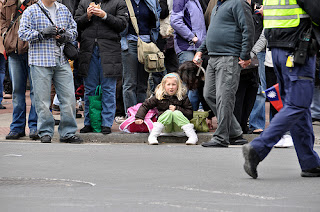 |
| Photo Used by Creative Commons License
Credit: Kevin Harber (Kevin H.) on Flickr. |
| Taking some time to climb the stairs at the mall
before picking up groceries |
- Leave plenty of extra time to get things done, so that it’s easy to move at Annabelle’s pace without becoming stressed or frustrated.
- Allow time before and after going into a place where Annabelle cannot safely walk about (such as a crowded grocery store), to allow her to walk and explore. I let her wander around on the lawn outside the grocery store for awhile before going inside, for example.
- Have more than one plan. When we go out shopping, I bring a sling and our shopping cart cover with a favorite object and a snack tucked inside the pocket. When Annabelle tires of riding in the cart, I place her in the sling instead. This respects her need for a change of scenery, and also gives her two separate places from which she can have a bird’s eye view. We don’t use a stroller, as it keeps her from being able to interact with me and others around us. When we’re in a place where she can safely walk, I allow her to do so.
- Empathize and speak respectfully. Occasionally Annabelle becomes frustrated at points when it’s hard for me to step away and tend to her immediately, such as when my groceries are already half checked and I need to pay for them. When this happens, I simply do my best to acknowledge her needs and let her know that I will meet them just as soon as I can. Her feelings of frustration are valid and she needs to know that she is heard.
 Melissa started blogging at The New Mommy Files when her firstborn was just three months old, but has found that no matter how familiar the mommy label becomes there is always something new to discover. She shares stories, thoughts, ideas, and inspiration from her journey on facebook and twitter as well as on her blog. In addition to mothering, topics that come up often include Montessori philosophy, elimination communication and cloth diapering, veganism, and finding a rhythm and balance in everyday life.
Melissa started blogging at The New Mommy Files when her firstborn was just three months old, but has found that no matter how familiar the mommy label becomes there is always something new to discover. She shares stories, thoughts, ideas, and inspiration from her journey on facebook and twitter as well as on her blog. In addition to mothering, topics that come up often include Montessori philosophy, elimination communication and cloth diapering, veganism, and finding a rhythm and balance in everyday life.
September 16, 2011 | Categories: attachment parenting, babywearing, breastfeeding, children's books, cosleeping, gentle parenting, life | Tags: attachment parenting, babywearing, breastfeeding, childhood, children, cosleeping, gentle discipline, sacrificial parenting | 4 Comments »  Award-winnning author, L.R.Knost, is the founder and director of the children's rights advocacy and family consulting group, Little Hearts/Gentle Parenting Resources, and Editor-in-Chief of Holistic Parenting Magazine. Books by L.R.Knost include Whispers Through Time: Communication Through the Ages and Stages of Childhood ; Two Thousand Kisses a Day: Gentle Parenting Through the Ages and Stages ; The Gentle Parent: Positive, Practical, Effective Discipline ; and Jesus, the Gentle Parent: Gentle Christian Parenting the first four books in the Little Hearts Handbook gentle parenting series, and children’s picture books Petey’s Listening Ears and the soon-to-be-released Grumpykins series.
Award-winnning author, L.R.Knost, is the founder and director of the children's rights advocacy and family consulting group, Little Hearts/Gentle Parenting Resources, and Editor-in-Chief of Holistic Parenting Magazine. Books by L.R.Knost include Whispers Through Time: Communication Through the Ages and Stages of Childhood ; Two Thousand Kisses a Day: Gentle Parenting Through the Ages and Stages ; The Gentle Parent: Positive, Practical, Effective Discipline ; and Jesus, the Gentle Parent: Gentle Christian Parenting the first four books in the Little Hearts Handbook gentle parenting series, and children’s picture books Petey’s Listening Ears and the soon-to-be-released Grumpykins series.
A September to Remember: Embracing Respect
Today’s though-provoking ‘vintage post’ is from Jessica Bowman, author of
To read more awesome insights from Jessica, you can find her over at Bohemian Bowmans!
~Embracing Respect~
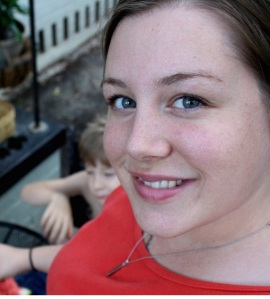 Well, the New Year is around the corner, in case you weren’t aware. And now that the Christmas sugar buzz is wearing off, I suppose most people, like me, are starting to reflect on 2010 and peer curiously towards 2011.
Well, the New Year is around the corner, in case you weren’t aware. And now that the Christmas sugar buzz is wearing off, I suppose most people, like me, are starting to reflect on 2010 and peer curiously towards 2011.
There are some a lot of circumstances in our life that I have no control over. This post is about the other things.
The things I can do.
First of all, I’m not a resolution making person.
I never make New Year’s resolutions. I think the “success” rate of them is abysmal, and I don’t want to be disappointed in myself later for not meeting some silly and entirely too specific goal. Instead, I just enter every new year with the obvious plans of growing wiser that year, becoming a better parent, wife, friend, and follower of Jesus.
However.
This year, I can feel myself funneling my regeneratory New Years powers in a certain direction.
No, it’s not a weight goal. Though it probably should be.
I’m not wanting to climb a mountain.
Or learn to make jewelry.
Or visit Disneyworld.
It’s a Family Mission Statement whittled down to one. single. word.
Respect.
I’ve been thinking a lot about respect the last couple of months. In regards to parenting. In regards to learning.
I began to learn about respect in marriage a few years ago when I read a book about it. I had never thought very much about respect before then. I had never realized the importance of it. The magnitude of it.
But, for some reason, though that book did shift my respect paradigm in relation to my husband, it didn’t leave that little box that I put it in. It never occurred to me that the concept could spill over into seemingly unrelated areas of life, like education.
But in the last quarter of 2010 I began to think a lot more deeply about education. About learning. About parenting.
And the theme I kept coming back to is Respect.
I’ve realized anew this year, that in practice, I don’t respect my children very much. I hold my authority over their head and play my “because I said so” card too often.
I often times feel like I am living out Colossians 3:21.
“Parents, don’t come down too hard on your children or you’ll crush their spirits.”
I’ve been crushing the spirits of my children.
With my impatience. With my harshness. With my disrespect.
So with tears and the simple, unrefined prayer of “help” repeated untold times as I lay in bed at night, I began to grasp a hold of the practice of respect in our day to day.
I’ve increasingly stopped talking to them as if they are children, but instead as if they are grown ups. Or, more accurately, as if they are people.
As if they are people created by God with talents and purpose that I have no right to squash with my annoyance.
So much of what children do that exasperate us are not “sins” at all. They are just people with very little experience at life who need to be led by example.
Our example.
Examples in authority are powerful.
It is ever so hard to step outside of the parenting you were parented with.
Or the marital skills that were modeled for you.
And it is ever so illogical to think that if we are harsh and impatient with our children, they will learn to be respectful and loving of their siblings and friends and future families.
So, I’ve been learning to respect my children. To treat them as people. To listen. To explain things they don’t know yet, as if they were another grown up, instead of as if they are inconveniences and ever disdainful children.
And, lo and behold, the more I’ve treated them with respect, the more they have respected me. And each other.
The more patient I’ve been with them, the more patience they’ve shown each other. The calmer I’ve been with them, the calmer they’ve been with each other. The more attention I’ve shown them, the more attention they’ve shown each other.
I realize this isn’t a complicated concept. And is the second greatest commandment at it’s base.
Treat other people the way you want to be treated.
But sometimes that can feel truly hard to practice and own.
So, that is my purposeful word for my family this year.
And it is already changing us.
Don’t forget to check Jessica out over at Bohemian Bowmans, and take a look at her ebook!
September 14, 2011 | Categories: Bible, children's books, Christian, Christian parenting, family, gentle discipline, gentle parenting, Jesus, life, love, parenting guide, positive discipline | Tags: Bible, childhood, children, gentle discipline, gentle parenting, parenting, positive parenting, sacrificial parenting | 1 Comment »  Award-winnning author, L.R.Knost, is the founder and director of the children's rights advocacy and family consulting group, Little Hearts/Gentle Parenting Resources, and Editor-in-Chief of Holistic Parenting Magazine. Books by L.R.Knost include Whispers Through Time: Communication Through the Ages and Stages of Childhood ; Two Thousand Kisses a Day: Gentle Parenting Through the Ages and Stages ; The Gentle Parent: Positive, Practical, Effective Discipline ; and Jesus, the Gentle Parent: Gentle Christian Parenting the first four books in the Little Hearts Handbook gentle parenting series, and children’s picture books Petey’s Listening Ears and the soon-to-be-released Grumpykins series.
Award-winnning author, L.R.Knost, is the founder and director of the children's rights advocacy and family consulting group, Little Hearts/Gentle Parenting Resources, and Editor-in-Chief of Holistic Parenting Magazine. Books by L.R.Knost include Whispers Through Time: Communication Through the Ages and Stages of Childhood ; Two Thousand Kisses a Day: Gentle Parenting Through the Ages and Stages ; The Gentle Parent: Positive, Practical, Effective Discipline ; and Jesus, the Gentle Parent: Gentle Christian Parenting the first four books in the Little Hearts Handbook gentle parenting series, and children’s picture books Petey’s Listening Ears and the soon-to-be-released Grumpykins series.
A September to Remember: Respectful Communication And Self Esteem
Our next guest for ~A September to Remember~ is The Twin Coach . If you enjoy her post (and you will!) don’t forget to check out her website!
 I had the good fortune last night to attend a meeting at which Sara Schuelein Perets, the director of our children’s preschool, was speaking. I have written about her and the school in previous posts and am truly a huge fan of hers. The topic of the meeting was using empathetic communication to avoid power struggles with our children. As parents we all want our children to have good self-esteem. But it is not where they go to school or what gadgets they have that gives them this; it is a relationship with their parents that is full of honor, respect and optimism that allows our children to grow up into the adults we envision them becoming. Our language, and the way we choose to communicate with children, reflects who they are and how they see themselves. For me, that is the key to self-esteem; the way we speak to our children is more important than anything we do or even what we actually say.
I had the good fortune last night to attend a meeting at which Sara Schuelein Perets, the director of our children’s preschool, was speaking. I have written about her and the school in previous posts and am truly a huge fan of hers. The topic of the meeting was using empathetic communication to avoid power struggles with our children. As parents we all want our children to have good self-esteem. But it is not where they go to school or what gadgets they have that gives them this; it is a relationship with their parents that is full of honor, respect and optimism that allows our children to grow up into the adults we envision them becoming. Our language, and the way we choose to communicate with children, reflects who they are and how they see themselves. For me, that is the key to self-esteem; the way we speak to our children is more important than anything we do or even what we actually say.
Understand Your Child’s Needs
So how do we build this honest relationship with our children? According to Sara, it all begins in getting to really know your child. As a preschool director as well as a parent and teacher educator, she knows that in order to do this you must learn to observe your children well. At every moment every child (in fact, every person) has a need. It is your job to figure out what your children’s needs are. Do they need to construct? Do they need to feel powerful? Do they need to figure out how things work? That is, ask yourself “in this moment that my child is (having a meltdown, banging a pot on the table, arguing with his baby sister etc.) what does he need?” Does he need a hug? Is he needing to understand how things work? Does he need to be understood? Is he in physical discomfort? If you are able to step back and consider what need is being met or what need is not being met, you will have a better idea of how to connect as opposed to simply reacting.
every moment every child (in fact, every person) has a need. It is your job to figure out what your children’s needs are. Do they need to construct? Do they need to feel powerful? Do they need to figure out how things work? That is, ask yourself “in this moment that my child is (having a meltdown, banging a pot on the table, arguing with his baby sister etc.) what does he need?” Does he need a hug? Is he needing to understand how things work? Does he need to be understood? Is he in physical discomfort? If you are able to step back and consider what need is being met or what need is not being met, you will have a better idea of how to connect as opposed to simply reacting.
Learn About Child Development
Sara’s advice for the second step in building your relationship with your children is to really learn about child development. By this she doesn’t simply mean the “flavor of the month” latest in pop psychology, but by beginning with the real theorists such as Eriksson, Piaget and Skinner [note: if these seem too intimidating, or you don’t agree with these theorists’ views, I highly recommend the series “Your One Year Old”, “Your Two Year Old” etc. I have “Your Three Year Old” highlighted in my “Great Parenting Books” section]. When you really understand a child’s stages of development you know what is age appropriate and you can accept what is happening much more easily. There is less anxiety as a parent when your 2 year old is biting if you know that this is actually a developmentally appropriate stage.
Reflect The World Back To Them
The next thing discussed was using reflective language. This allows your children to experience things through their own eyes as opposed to coloring it with our value judgments. If we can avoid evaluative statements such as “that’s a beautiful painting!” or “you did such a good job!”, we avoid raising children who become reliant on praise and who look to us to know whether something is of value. Instead, reflective language such as “I see you are painting a picture. Can you tell me about it?” allows them to reflect their place in the world and their experience as they see it. Additionally, as parents we need to reflect emotions that are varied, subtle and which move beyond just “happy” and “sad”: “I see that you are very frustrated/disappointed/lonely now. I’m sorry about that.” Be in the emotion with them as opposed to trying to solve it. Instead of saying, “Don’t cry”, let them know that all emotions are fine, but all behavior is not. Really let your children feel the fullness of their emotions. If you are constantly trying to fix things for them you don’t allow them to feel the full range of emotions and they don’t learn to work through these emotions. I always point out (to women in particular) how frustrating it is for us when we complain about something and someone (usually our husbands) immediately launches into “fix it” mode; sometimes all we want is to be heard, to feel felt, to complain. The theory is the same when it comes to our children. You don’t need to solve everything for them; it is often better to just reflect what they are experiencing (“you’re having a hard time getting that puzzle done”) and then sit back and see what happens next.
job!”, we avoid raising children who become reliant on praise and who look to us to know whether something is of value. Instead, reflective language such as “I see you are painting a picture. Can you tell me about it?” allows them to reflect their place in the world and their experience as they see it. Additionally, as parents we need to reflect emotions that are varied, subtle and which move beyond just “happy” and “sad”: “I see that you are very frustrated/disappointed/lonely now. I’m sorry about that.” Be in the emotion with them as opposed to trying to solve it. Instead of saying, “Don’t cry”, let them know that all emotions are fine, but all behavior is not. Really let your children feel the fullness of their emotions. If you are constantly trying to fix things for them you don’t allow them to feel the full range of emotions and they don’t learn to work through these emotions. I always point out (to women in particular) how frustrating it is for us when we complain about something and someone (usually our husbands) immediately launches into “fix it” mode; sometimes all we want is to be heard, to feel felt, to complain. The theory is the same when it comes to our children. You don’t need to solve everything for them; it is often better to just reflect what they are experiencing (“you’re having a hard time getting that puzzle done”) and then sit back and see what happens next.
Family Mission Statement
We’re all somewhat familiar with the idea of a mission statement from college term papers or even resume writing. Sara’s idea in this case is quite similar. Write one or two sentences that capture what you want to achieve as a family or what values you want to instill. In some ways, without this declaration of intent, you are just drifting through your days. So give it some thought; what things do you believe in? What do you stand for? What rituals have meaning for you? An example of a family mission statement is “To treat each other with love, respect and honesty and to always listen to each other”. Once you have your statement, frame it, hang it up, put it on the door of your children’s bedroom; basically, show that this statement has some value and importance to your family. And don’t forget, you’ll want to revisit your statement from time to time, as your children get older to see if it needs updating.
 Respectful Communication
Respectful Communication
Sara spoke about a few key ingredients for diffusing power struggles and building self-esteem, in particular “I” messages and tone of voice. Imagine that your child has thrown all of his toy trains around the room and is refusing to clean them up. You might feel like saying: “You are making such a mess! You never clean up and you’re making me so frustrated!”. The problem is, this type of language, and the tone in which you would probably would say it, succeeds in making your child feel small, weak, powerless and very defensive. This is a perfect scenario for a power struggle. If, however, you use a calm tone of voice and say something like: “I’m really frustrated. It looks like there are too many toys here; maybe we need to get rid of some” you are instead setting up a situation in which they have some power and they feel respected. When they feel this way they want to cooperate. When your children do what you ask them to do, don’t use “good job” as a way to praise or say thank you. Instead, say something along the lines of “I’m so happy that you remembered to clean up; that makes me so happy”. This way of speaking shows that you appreciate them. Additionally, it is specific enough so that they understand what they did to make you happy, thus giving them a clear idea of what they can do the next time.
Empathetic Listening and Being a “Big Boy/Girl”
The last part of the evening Sara spent discussing these last two concepts. When we set boundaries and our children experience natural consequences, they will probably be upset, angry, sad etc. We must be empathetic about these emotions. By saying to them “Don’t cry, everything will be OK,” we are telling them that their feelings are not ok to have. You want to comfort your children but not coddle them. Additionally, teach them to cope and sort out how they feel. For example, if your child were to fall down you could say, “Did you fall down? That must have hurt! Let me make it all better” which is a very natural reaction for most parents. However, you might want to draw out their experience by letting them tell you what happened and, as described above when I was talking about reflective listening, don’t add your judgments into it. Perhaps it didn’t hurt. Maybe they were startled or embarrassed or scared. Let them figure out their emotions and then, perhaps, offer an empathetic “I’m sorry you fell. That must have been scary (or whatever the emotion was). What would you like to do now?”
As for the “big boy”, “big girl” comments which many parents use as praise or a way to encourage cooperation, Sara’s belief is that this can actually backfire. For most children the world feels really huge and, in comparison, children can feel awfully small. Constantly referring to your children as “big” when they don’t feel that way can result in the child acting out in an effort to feel powerful. Additionally, when you label a child “big”, she then feels that she has to live up to that label which can cause regression in some instances. For example, Sara brought up the “big girl bed”. When your child moves from the crib to a big bed it can be really scary for them. If it is loaded with all sorts of “encouragement” about how the child is now a “big girl” and gets to have this wonderful new thing because of it, the child may think along the lines of “if I do something where I’m not acting big, will I have my bed taken away?”. Better to just call it a new bed or a big bed but not label your child as “big”. Another example Sara used was in reference to potty use. “Look at Johnny! He’s such a big boy, he goes pee pee in the potty!” and the there’s Sam who has felt like a big boy up until now but begins to wonder if maybe he’s not big after all because he’s not quite ready to use the potty. Better to just say Johnny must feel so proud of himself for peeing in the potty and Sam will go too, when he’s ready.
And so the evening ended. I think we could have gone on talking to Sara for hours more. I am a compulsive note taker when I go to these types of workshops. In part because I anticipate being able to write a post which I hope will interest and enlighten those who read my blog; I’ve also noticed that in taking these classes, attending these lectures and writing these posts I am able to take information I am somewhat familiar with already and make it fresh in my mind once again. Thus, today I noticed myself being much more patient and more in tune with our children. I think, for me, the act of writing about parenting keeps me in the moment and in the best frame of mind to be the kind of parent I want to be. Thanks for indulging me!
If you are interested in private parenting consultations with Sara Schuelein Perets or to put together a group workshop with her (6 weeks, 10 person maximum), she can be reached at sara@thesunshineshack.com. We feel truly blessed to have found a school run by such a remarkable woman. If you have the chance to work on your parenting skills with her one on one or in an intimate group, I highly recommend it.
Thanks for reading!
-Gina, The Twin Coach
September 13, 2011 | Categories: attachment parenting, family, gentle discipline, gentle parenting, parenting guide, positive discipline | Tags: attachment parenting, childhood, children, gentle discipline, gentle parenting, natural parenting, positive parenting | Leave A Comment »  Award-winnning author, L.R.Knost, is the founder and director of the children's rights advocacy and family consulting group, Little Hearts/Gentle Parenting Resources, and Editor-in-Chief of Holistic Parenting Magazine. Books by L.R.Knost include Whispers Through Time: Communication Through the Ages and Stages of Childhood ; Two Thousand Kisses a Day: Gentle Parenting Through the Ages and Stages ; The Gentle Parent: Positive, Practical, Effective Discipline ; and Jesus, the Gentle Parent: Gentle Christian Parenting the first four books in the Little Hearts Handbook gentle parenting series, and children’s picture books Petey’s Listening Ears and the soon-to-be-released Grumpykins series.
Award-winnning author, L.R.Knost, is the founder and director of the children's rights advocacy and family consulting group, Little Hearts/Gentle Parenting Resources, and Editor-in-Chief of Holistic Parenting Magazine. Books by L.R.Knost include Whispers Through Time: Communication Through the Ages and Stages of Childhood ; Two Thousand Kisses a Day: Gentle Parenting Through the Ages and Stages ; The Gentle Parent: Positive, Practical, Effective Discipline ; and Jesus, the Gentle Parent: Gentle Christian Parenting the first four books in the Little Hearts Handbook gentle parenting series, and children’s picture books Petey’s Listening Ears and the soon-to-be-released Grumpykins series.
A September to Remember: I am a good mom, and other reasons labels don’t work…
September 9, 2011 | Categories: attachment parenting, babywearing, birth, breastfeeding, cosleeping, family, gentle discipline, gentle parenting, natural parenting, newborn, positive discipline | Tags: attachment parenting, babywearing, breastfeeding, childhood, children, cosleeping, gentle discipline, gentle parenting, play, positive parenting, sacrificial parenting | Leave A Comment »  Award-winnning author, L.R.Knost, is the founder and director of the children's rights advocacy and family consulting group, Little Hearts/Gentle Parenting Resources, and Editor-in-Chief of Holistic Parenting Magazine. Books by L.R.Knost include Whispers Through Time: Communication Through the Ages and Stages of Childhood ; Two Thousand Kisses a Day: Gentle Parenting Through the Ages and Stages ; The Gentle Parent: Positive, Practical, Effective Discipline ; and Jesus, the Gentle Parent: Gentle Christian Parenting the first four books in the Little Hearts Handbook gentle parenting series, and children’s picture books Petey’s Listening Ears and the soon-to-be-released Grumpykins series.
Award-winnning author, L.R.Knost, is the founder and director of the children's rights advocacy and family consulting group, Little Hearts/Gentle Parenting Resources, and Editor-in-Chief of Holistic Parenting Magazine. Books by L.R.Knost include Whispers Through Time: Communication Through the Ages and Stages of Childhood ; Two Thousand Kisses a Day: Gentle Parenting Through the Ages and Stages ; The Gentle Parent: Positive, Practical, Effective Discipline ; and Jesus, the Gentle Parent: Gentle Christian Parenting the first four books in the Little Hearts Handbook gentle parenting series, and children’s picture books Petey’s Listening Ears and the soon-to-be-released Grumpykins series.
A September to Remember: Flexibility Mints
Our next ‘vintage post’ for ~A September to Remember~ is Mandy from A Bona Fide Life .
Mandy ~ Unschooling mom of a leukemia survivor, a tree climbing rock star, and a dog loving toddler. Wife of a pirate. Self-proclaimed weirdo. Learning to not take myself too seriously and to have a heart of gratitude, no matter what life may throw my way. These days I mostly blog about unschooling, leukemia, art, food, books, television, God, and gardening.
Months ago… and I do mean MONTHS (before Hunter got sick), Ronin found a cook book for kids at Goodwill. She brought it home and immediately picked out these (God forbidden) GREEN mints made with (gasp) powdered sugar. She decided that she wanted to make them.
She’s gotten the book out at least ten times and asked to make the mints each time since then.
Fast forward ten or so months… and I finally remember to buy the powdered sugar at the store (what? we never shop the middle aisles at regular super markets and when we are at places like Whole Foods, it never occurs to us to look at things like sugar).
So today was the day that we were going to make the mints. I had just assumed that we’d skip the green food coloring. I have food coloring in the house… but it’s for art projects. Not food. Right?
But the green food coloring was really important to her. And the recipe only called for two drops. At first I said no. I said we could just leave them white and brown. But she got this really sad look on her face and I realized that I was being a real killjoy. So I apologized and we added the two stinkin’ drops of food coloring. And it felt amazing.
The whole thing felt like the opposite of a parenting fail. Would that be a parenting pass?
She looks beyond blissful, doesn’t she?
Don’t forget to check out Mandy’s other awesome posts at A Bona Fide Life !
September 8, 2011 | Categories: attachment parenting, Christian parenting, food, gentle parenting, homeschooling, natural parenting | Tags: attachment parenting, childhood, children, Christian parenting, food, gentle parenting, homeschooling, play, positive parenting | Leave A Comment »  Award-winnning author, L.R.Knost, is the founder and director of the children's rights advocacy and family consulting group, Little Hearts/Gentle Parenting Resources, and Editor-in-Chief of Holistic Parenting Magazine. Books by L.R.Knost include Whispers Through Time: Communication Through the Ages and Stages of Childhood ; Two Thousand Kisses a Day: Gentle Parenting Through the Ages and Stages ; The Gentle Parent: Positive, Practical, Effective Discipline ; and Jesus, the Gentle Parent: Gentle Christian Parenting the first four books in the Little Hearts Handbook gentle parenting series, and children’s picture books Petey’s Listening Ears and the soon-to-be-released Grumpykins series.
Award-winnning author, L.R.Knost, is the founder and director of the children's rights advocacy and family consulting group, Little Hearts/Gentle Parenting Resources, and Editor-in-Chief of Holistic Parenting Magazine. Books by L.R.Knost include Whispers Through Time: Communication Through the Ages and Stages of Childhood ; Two Thousand Kisses a Day: Gentle Parenting Through the Ages and Stages ; The Gentle Parent: Positive, Practical, Effective Discipline ; and Jesus, the Gentle Parent: Gentle Christian Parenting the first four books in the Little Hearts Handbook gentle parenting series, and children’s picture books Petey’s Listening Ears and the soon-to-be-released Grumpykins series.
A September to Remember: Don’t Miss Out on this Incredible Opportunity!
How many missed opportunities are there in your day? This question has been beating in my chest the last few weeks. Let me back up a little and explain what I mean.
I keep getting a sense that the greatest skill I can develop in my life is the ability to listen. People, including my children, don’t need or want my advice or opinions, they just want to be heard. It is our heart’s cry to be truly heard and understood – and this is a powerful thing. It’s one of the greatest gifts we can give to another human being.
Why is Listening so Powerful?
Life brings all of us different challenges and experiences; some full of heartache and pain. We all have emotions surrounding the different events and scenarios in our life. When someone listens to us, it creates a safe place to share and release those emotions. By listening, you are providing that person an opportunity to process and work through how they’re feeling. Listening helps those difficult feelings to surface and be released. This is healing. The more you feel, the more you heal.
September 6, 2011 | Categories: attachment parenting, Bible, Christian, Christian parenting, gentle discipline, gentle parenting, homeschooling, Jesus, positive discipline | Tags: attachment parenting, Bible, childhood, Christian parenting, gentle discipline, gentle parenting, parenting, positive, positive parenting, sacrificial parenting | Leave A Comment »  Award-winnning author, L.R.Knost, is the founder and director of the children's rights advocacy and family consulting group, Little Hearts/Gentle Parenting Resources, and Editor-in-Chief of Holistic Parenting Magazine. Books by L.R.Knost include Whispers Through Time: Communication Through the Ages and Stages of Childhood ; Two Thousand Kisses a Day: Gentle Parenting Through the Ages and Stages ; The Gentle Parent: Positive, Practical, Effective Discipline ; and Jesus, the Gentle Parent: Gentle Christian Parenting the first four books in the Little Hearts Handbook gentle parenting series, and children’s picture books Petey’s Listening Ears and the soon-to-be-released Grumpykins series.
Award-winnning author, L.R.Knost, is the founder and director of the children's rights advocacy and family consulting group, Little Hearts/Gentle Parenting Resources, and Editor-in-Chief of Holistic Parenting Magazine. Books by L.R.Knost include Whispers Through Time: Communication Through the Ages and Stages of Childhood ; Two Thousand Kisses a Day: Gentle Parenting Through the Ages and Stages ; The Gentle Parent: Positive, Practical, Effective Discipline ; and Jesus, the Gentle Parent: Gentle Christian Parenting the first four books in the Little Hearts Handbook gentle parenting series, and children’s picture books Petey’s Listening Ears and the soon-to-be-released Grumpykins series.
A September to Remember: Gentle Discipline~Request or Demand?
Our next awesome guest for ~A September to Remember~ is Zoie from Touchstonez!
Gentle Discipline, Part 1: Request or Demand? A point of distinction
Part 2: Flipping off your kids (included below)
 I’m at the library escaping my love-filled, but very noisy home full of boys. Aside from the noise of fellow library patrons’ laptop startup/shutdown tones, vibrating cell phones (just as loud as a ring tone!), occasional person who actually thinks it’s okay to have a conversation on said cell phone (!) it’s a peaceful break for me to concentrate.[1]
I’m at the library escaping my love-filled, but very noisy home full of boys. Aside from the noise of fellow library patrons’ laptop startup/shutdown tones, vibrating cell phones (just as loud as a ring tone!), occasional person who actually thinks it’s okay to have a conversation on said cell phone (!) it’s a peaceful break for me to concentrate.[1]
A mom with 2 small boys looks down at them and asks, “Do you want to leave the library now? It’s time to go to soccer practice.” Of course, the answer she gets from both boys is, “No! I don’t wanna go to soccer!” The mom says, “It’s time to go now. I told you it’s time for soccer.” The boys protest further, “I don’t want to go! I don’t like you, mama!” One bolts for the audiobooks and begins knocking them to the floor. From there, the situation further degenerates into the mom making threats to not take them to soccer, the boys loudly melting down, until she angrily scoops them both up and carries them out the door.
It’s a scene that you see all the time. But I do find it remarkable how quickly a question asked from a place of disconnection can escalate into an all-out anger and pain tug-o-war.
Ironically, as I watched this family, I’m at the library to write a post about gentle discipline [2] and how if we do not connect with ourselves as parents first, we can not hope to connect with our children.
I make the claim that connection is what it really is all about.
Hybrid Rasta Mama wrote a great post about how often kids are told, “No!” And, of course, since I’m in the middle of writing this post, my comment is lifted directly from what I was writing:
As my kids get older, one of the things I try to do in addition to many of the insights you [Hybrid Rasta Mama] list is to remember the mantra “connect before you correct.” This refers to 3 connections:
What is my need here? (safety, quiet, peace, etc)
What is my child’s need here? (Exploration, hunger, affection, etc)
How can I honor both our needs here and now? Once I’ve identified these (the hard part), I can find the yes in the no (the easy part)
Point 1 is vitally important and one we, as parents, most often overlook. Once you have connected with your own need, you can decide whether you are asking your child for something or demanding something. To put myself in the place of the library mother, I might find that I would like to get to soccer practice at the appointed time. My need is for punctuality. Point 2, what are my children’s needs here? They need fun. Point 3, How can I meet both of our needs and find the yes in the no?
I am not going to ask them if they “would like” to go because what do I do if they say no? If I am going to ask them something, it will be something that meets my need for punctuality and their need for fun. I may ask something like, “I see you are enjoying the library and want to have fun. I need to ensure we get to soccer practice at xx o’clock. Soccer practice begins in xx minutes. How would you like to run around on the grass out front?” This moves us toward the door, reminds them of soccer, and allows them to play. Hopefully, then I can continue this gentle moving toward the soccer appointment from there.
But, what if I check in with my needs and find that a “No, I don’t want to play on the grass” is not an acceptable answer to me? I need to find out if I am really making a request or if I need to tell them something. If I am making a demand, then I need to state that clearly (nothing wrong with stating what you need, right?) Like that library mom, she was not actually asking a question, she was making a demand but was hedging about it. She was moving from a place of disconnect into further disconnection with her children. [3]
If it’s not acceptable to receive an answer you don’t want, then don’t ask the question.
Gently, tell what you need and explain what will happen. Lather. Rinse. Repeat. As many times as necessary and then some more. The trick to maintaining your patience with this, is that you are moving from connecting with your own needs (you are meeting your needs.) As long as you can continuously check in with your needs as you are making your statements, you can do so from a place of abundance instead of a place of deficiency, and children really do feel this from their parents and they do respond.
If you haven’t been practicing connected parenting in this way, it may take quite a lot of patient repetition on your part to maintain this constant checking and rechecking in for connection, but it will come together eventually.
Part 2 of this series continues with Flipping Off: Another trick to connecting while correcting
[1] Okay, maybe I’m holding a little resentment from the noise. Breathing through it now…
[2] Now, a series. Yikes!
[3] I know I am not taking into account what happened before or after the portion of their interaction that I witnessed. So, this is a simplistic example. There are times when melt downs happen both for parents and for children. Then, maintaining connection, while scooping up a melting down child includes, explaining what you are doing, stating your feelings without referencing the child (i.e.: I am feeling sad that we have an appointment when I see you want to continue playing. Not, I feel annoyed that you don’t come when I say, for example) I’ll explore this topic further in a later post
~~~~~~~~~~~~~~~~~~~~~~~~~~~~~~~~~~~~~~~~~~~~~~~~~~~~~~~~~~~~~~
Gentle Discipline, Part 2: Flipping off your kids~Another trick to connecting while correcting
 One of the biggest gentle discipline challenges for me is parenting during transitions. Going from one task to another or leaving one place for another can try the patience of the most keyed in parent-child pair. Some of the techniques I’ve used with success to ease the transitions are:
One of the biggest gentle discipline challenges for me is parenting during transitions. Going from one task to another or leaving one place for another can try the patience of the most keyed in parent-child pair. Some of the techniques I’ve used with success to ease the transitions are:
- Explicitly stating that we will be going somewhere or moving to a different task, making sure to include sharing that this means stopping what we are currently involved in.
- Getting down on their level, making eye contact and possibly using touch to be certain they understand
- Explaining how long before the transition will happen and either
- Let them set a timer or letting them know I am setting it
- Verbally counting down the time left, along with reminders that this means our current activity will be ending and the new one beginning
- Talking about things to look forward to after the transition
- Keeping It Simple
- Giving them a job to help us get out the door so they feel like they are contributing to our family
- Affirming their power to choose for themselves, whenever possible, anything they may want to wear, bring or do while going
- Always using a calm, reassuring voice (even when annoyed or frustrated)[1]
- If necessary, modeling my feelings of worry about not meeting my needs, etc, using “I” statements.
Some of you may read this list and think I’m going through an awful lot just to get us out the door peacefully. I could simply ignore their needs, bundle them up and get them out the door. But, that will end in tears-usually for all of us. And this is what I would like to avoid by honoring everyone’s needs.
I feel it is my job as a parent to guide and facilitate through things that are difficult for them. They are learning about the world and don’t have the frame of reference that I do (hopefully) as an adult. I try to respect that until they have enough repetition with transitions, this can be challenging for them. Eventually, these tools will no longer necessary and we’ll move more easily from one thing to another.
Most of the time, these techniques allow us to move fairly smoothly from one thing to the next. I rarely need to use all of these techniques at once. But, sometimes I do use them all.
And sometimes I use them all and there’s still a toddlerpreschoolermommy meltdown.
Sometimes there’s a breakdown in our communication. Sometimes a meltdown is inevitable as a pressure valve simply needs release. Sometimes there’s not a reason I can point to.
I have to admit, I do not do well with meltdowns. The noise, that particular pitch of children, goes directly through my bones. I have to use all of my will to contain my feelings of anger. And this is where I gain some understanding of what it must be like to be a child who is so much smaller than an adult;
An adult who can turn the world upside down with one word, look or hand used in anger.
If I’m the (supposed) adult in control here and I’m having trouble not melting down, how must it feel to someone without experience with emotional control? I’ve had PPD and a bit of experience with the fear of having an emotion so large that there’s no guarantee that it will ever stop or that it won’t swallow me whole.
This is what I call “Flipping Off My Kids”
It’s a slightly tongue-in-cheek reminder to lighten up and ask myself:
- How would I feel if I were in the middle of something and had to immediately drop what I was doing?
- How would I feel if I declined the request and the person yelled at me? Would I feel it was a request or a demand couched as a request?
- How would I feel if my needs weren’t listened to and I was made to go somewhere or do something without any say in the matter?
- How would I feel if all my power was subsumed by someone physically and emotionally larger than myself?
I remind myself of how completely absorbing activities can be for children; how hard transitions can be. I flip my own false belief which leads to the reaction “Look what they are doing to me!” into empathetic understanding that this is what they are feeling without the (supposed) adult maturity and frame of reference to handle such overwhelming feelings.
I slow down. I breathe. I calmly state what I’m feeling. It doesn’t matter whether I think they are hearing me. They will respond to my mood, if not my exact words. If I can let go of our appointment or task, I let it go. I’ll take a break if it means not yelling. Even if I don’t have an adult to spell me out. I would rather close the door on my kids, after explaining that I need a moment of quiet time, than yell something I’ll regret later. I pull out all my stops for self-soothing that I need to get us to where we need to be.
Once I can get to a little bit of calm within myself, then I can figure whether they need me to hold the space for them, distract them, talk with them, soothe them… Whatever works to help them come back from that scary tantrumy place and know that, yet again, they were able to control their emotions, that they are not their emotions, and that emotions are neither good nor bad. Emotions just are.
And most importantly, I want them to know that they are always loved and always Good kids. Nothing they could ever do could change that.
I’ll reiterate that this is one of my most challenging parenting times and I do not always succeed the way I wish. Especially when all three are wailing and I just want to wish myself away, I can often feel most affirmed, most loving, and most alive if, if, I can bring myself into the present moment and be with myself and with my kids.
[1] Although, I do think it is valid to show your emotions in your voice, but always with “I” statements. No matter how much the urge is to punish, shame or blame, I stick to the “I” statements.
[2] This will soon link to an upcoming post about identifying needs
How do you handle transitions? Have you tried some of these ideas or do you have any other tools that have been effective for you? Are there some tools that do not work for your family? Do you think you’ll try “Flipping your kids off?” I’d love to hear from you.
This is a series, but I haven’t written the next part, yet. Are there any parenting issues you would like to see here? Please let me know.[2]
Check out more awesome parenting insights from Zoie over at Touchstonez!
September 4, 2011 | Categories: attachment parenting, children's books, gentle discipline, gentle parenting, positive discipline | Tags: attachment parenting, childhood, children, children's books, discipline, gentle discipline, gentle parenting, parenting, positive parenting, rebellion, sacrificial parenting | 2 Comments »  Award-winnning author, L.R.Knost, is the founder and director of the children's rights advocacy and family consulting group, Little Hearts/Gentle Parenting Resources, and Editor-in-Chief of Holistic Parenting Magazine. Books by L.R.Knost include Whispers Through Time: Communication Through the Ages and Stages of Childhood ; Two Thousand Kisses a Day: Gentle Parenting Through the Ages and Stages ; The Gentle Parent: Positive, Practical, Effective Discipline ; and Jesus, the Gentle Parent: Gentle Christian Parenting the first four books in the Little Hearts Handbook gentle parenting series, and children’s picture books Petey’s Listening Ears and the soon-to-be-released Grumpykins series.
Award-winnning author, L.R.Knost, is the founder and director of the children's rights advocacy and family consulting group, Little Hearts/Gentle Parenting Resources, and Editor-in-Chief of Holistic Parenting Magazine. Books by L.R.Knost include Whispers Through Time: Communication Through the Ages and Stages of Childhood ; Two Thousand Kisses a Day: Gentle Parenting Through the Ages and Stages ; The Gentle Parent: Positive, Practical, Effective Discipline ; and Jesus, the Gentle Parent: Gentle Christian Parenting the first four books in the Little Hearts Handbook gentle parenting series, and children’s picture books Petey’s Listening Ears and the soon-to-be-released Grumpykins series.
A September to Remember: Memories
 This has been such a full year for our family. I find myself wondering often, though, about my little boy. At two and a half, what will he remember of this year? Anything?
This has been such a full year for our family. I find myself wondering often, though, about my little boy. At two and a half, what will he remember of this year? Anything?
Will he remember the wonderful four months we spent with his grandma, grandpa, and four aunties this summer? Will he remember the time he got to spend with his daddy during the day, the fun they had together, the way it strengthened the bond they already shared?
Will he remember any of the first three houses we’ve lived in so far this year? His very first home in Ottawa? The beautiful house in Manitoba, with acres of land to run around on and a bountiful garden that he watched us dig, till, plant, water, weed and harvest? Will he remember the place we’ve called home since our arrival in Vancouver this fall, the place we had hoped to live in for our four years here, the place we will be saying goodbye to in only a couple short weeks?
What of the other people who have been a part of his life? How long will he continue to remember his first friend Luke? Will he recognize those relatives we see rarely – great grandparents, great aunts and uncles, cousins? If only we could all be together, always, instead of so far flung from each other.
Will he remember those experiences that he talks of so often and so fondly right now? Trips to the aquarium, the farm, the theatre. Riding the train at the mall. Dancing with his mom in the snow at the park, his hands buried in her sleeves to keep warm. Visits to the midwife, listening to his baby brother or sister’s heartbeat, endless conversations – “talk more about the baby, Mom!” Will he remember that tiny baby being born?
What will he remember?
What will he forget?
Sometimes I feel sad over the thought of all that will slip from his mind over the years. I’ve long felt that way over my own life. A box full of journals from my teenage years doesn’t seem to be enough. What about the little everyday things, the moments I failed to record, the milestones I didn’t notice at the time, all the things I have already forgotten? I wish I could record all of these happy moments of his own life, both for his sake and for mine. I want him to remember, and I want to remember them myself.
Other times, though, I worry about what he will remember. Will he remember that I sat by his bed every night, singing to him as he drifted off to sleep? Or will he remember instead the times I spoke harshly, wanting him to just go to sleep so I could go do other things (as though washing the supper dishes was more important than being a comforting presence to my son)? Will he remember the trips to the park, the library, the farm – or will he remember instead the times I was overly anxious to get back to the comfort of our home, rushing him along instead of allowing him to linger and explore as long as he liked? Will he remember the times I dealt with him lovingly, patiently, respectfully, discipling him into greater maturity – or will he remember instead my moments of failure as a parent, treating him roughly, speaking to him harshly, failing to hear him, allowing my selfishness to come first, badgering him into submission rather than discipling him into true obedience?
Sad that he will forget, worried that he will remember, I become increasingly conscious of the memories I am creating for this little boy, aware of their significance.
And so we bake gingerbread moose and shortbread trains. He kneads his own small piece of dough as we make our weekly bread together. We avoid daily television and instead snuggle together for a special movie treat. We read endless piles of books together. I warm up a glass of chocolate milk when he wakes one night, allowing him to climb into our bed and join us as we sip our own hot cocoa. I offer comfort in a daily routine and excitement in the occasional deviation from it.
And we talk. Days filled with conversation, recalling the good times that have passed, praising the people we have grown to love, anticipating the good that lies ahead.
This, in hopes that some day down the road, he’ll say, Mom, remember when…, and I will smile, because he remembers, and I remember, and the things we remember are all the best moments of our lives.
__________________
 Cynthia is the mother of two little boys, an inquisitive preschooler and an energetic toddler. She blogs at The Hippie Housewife, where she shares her thoughts on attachment parenting, natural living, life as a Jesus-follower, and more, all tied together through her journey towards a more intentional life.
Cynthia is the mother of two little boys, an inquisitive preschooler and an energetic toddler. She blogs at The Hippie Housewife, where she shares her thoughts on attachment parenting, natural living, life as a Jesus-follower, and more, all tied together through her journey towards a more intentional life.
This article was previously published on The Hippie Housewife.
September 2, 2011 | Categories: attachment parenting, babywearing, Bible, birth, Christian parenting, gentle parenting, Jesus | Tags: attachment parenting, babywearing, bedtime stories, Bible, childhood, Christian parenting, gentle parenting, Jesus, positive parenting | Leave A Comment »  Award-winnning author, L.R.Knost, is the founder and director of the children's rights advocacy and family consulting group, Little Hearts/Gentle Parenting Resources, and Editor-in-Chief of Holistic Parenting Magazine. Books by L.R.Knost include Whispers Through Time: Communication Through the Ages and Stages of Childhood ; Two Thousand Kisses a Day: Gentle Parenting Through the Ages and Stages ; The Gentle Parent: Positive, Practical, Effective Discipline ; and Jesus, the Gentle Parent: Gentle Christian Parenting the first four books in the Little Hearts Handbook gentle parenting series, and children’s picture books Petey’s Listening Ears and the soon-to-be-released Grumpykins series.
Award-winnning author, L.R.Knost, is the founder and director of the children's rights advocacy and family consulting group, Little Hearts/Gentle Parenting Resources, and Editor-in-Chief of Holistic Parenting Magazine. Books by L.R.Knost include Whispers Through Time: Communication Through the Ages and Stages of Childhood ; Two Thousand Kisses a Day: Gentle Parenting Through the Ages and Stages ; The Gentle Parent: Positive, Practical, Effective Discipline ; and Jesus, the Gentle Parent: Gentle Christian Parenting the first four books in the Little Hearts Handbook gentle parenting series, and children’s picture books Petey’s Listening Ears and the soon-to-be-released Grumpykins series.
My Little Caboose and the Very Bad, No Good…Month :(
~The Confession~
 This adorable little person has been a royal pain in the ‘caboose’ for the last few weeks. She has whined, cried, ignored direct requests, climbed on me, hung on me, played with her food, snatched things from the baby, been in my face and space incessantly, and on and on. And the more difficult she got, the more I ‘powered up’ on her. Oh, I didn’t yell or punish. No, I pulled out all my gentle parenting techniques, spoke calmly and respectfully to her, offered diversions and alternatives, read her books and provided lots of reasonable and kind council. She occasionally responded with a half-hearted attempt at cooperation or humorously declined to cooperate, but more often than not just dug in her heels and determinedly upset the normally peaceful and happy timbre of our home.
This adorable little person has been a royal pain in the ‘caboose’ for the last few weeks. She has whined, cried, ignored direct requests, climbed on me, hung on me, played with her food, snatched things from the baby, been in my face and space incessantly, and on and on. And the more difficult she got, the more I ‘powered up’ on her. Oh, I didn’t yell or punish. No, I pulled out all my gentle parenting techniques, spoke calmly and respectfully to her, offered diversions and alternatives, read her books and provided lots of reasonable and kind council. She occasionally responded with a half-hearted attempt at cooperation or humorously declined to cooperate, but more often than not just dug in her heels and determinedly upset the normally peaceful and happy timbre of our home.
And then it happened. A few nights ago, I stood in the shower listening to the goings-on outside the door (A mama’s ears are the proverbial ‘eyes in the back of her head’ you know!), and it hit me. Over and over, I heard my older children tell my little ‘caboose,’ “No,” as she made one unfortunate decision after another. Over and over, I heard her whine and argue and cry. Over and over, I heard the older ones correct her, not hatefully or harshly, but repeatedly, gently, and firmly. And, over and over, I realized I was hearing myself as my older children reflected what they were seeing and hearing from me…repeated, gentle, firm correction…but no listening…none. And my heart broke. I realized that I had been parenting from a position of disconnect from my precious little ‘caboose.’ Between jumping through all the hoops necessary to get a homeschooler into a pre-med university program to working with my publisher on the super slow and cumbersome process of getting my books onto store shelves in Barnes & Nobles and Family and Lifeway Christian Stores, to writing an upcoming book, my busy schedule had overtaken my parenting.
my little ‘caboose,’ “No,” as she made one unfortunate decision after another. Over and over, I heard her whine and argue and cry. Over and over, I heard the older ones correct her, not hatefully or harshly, but repeatedly, gently, and firmly. And, over and over, I realized I was hearing myself as my older children reflected what they were seeing and hearing from me…repeated, gentle, firm correction…but no listening…none. And my heart broke. I realized that I had been parenting from a position of disconnect from my precious little ‘caboose.’ Between jumping through all the hoops necessary to get a homeschooler into a pre-med university program to working with my publisher on the super slow and cumbersome process of getting my books onto store shelves in Barnes & Nobles and Family and Lifeway Christian Stores, to writing an upcoming book, my busy schedule had overtaken my parenting.

How many times had I told my little ‘caboose,’ “Just a minute,” when she needed me, and how often had that ‘minute’ stretched into an hour? How many times had my eyes strayed back to my computer screen in the middle of one of her stories about how terribly painful the invisible scratch on her pinky toe was or how pretty the light looked as it danced through the dust motes in front of the window? How often had she fallen asleep waiting, waiting, waiting for me to come and read her a bedtime story? (Oh, my mommy’s heart hurts.)
And so I took my own advice…advice I’ve given umpteen times to other mama’s who were experiencing a ‘parenting disconnect.’ I took my disgruntled, whiney, clingy, disruptive child who I felt like sending to her room just so I could get a break and to make her think about her actions and to get her behavior ‘back in line’…and I pulled her closer than close, under my mama’s wing. I took her everywhere with me. I let her sleep on a pallet next to my bed. We cooked dinner together and made a museum out of her paintings and folded towels together. And I listened and listened and listened…intentionally and thoughtfully and responsively. And my little ‘caboose’ and I reconnected. In just a matter of days, life in the Knost household returned to its normal cadence of what we affectionately call ‘joyful chaos.’ People see the difference and ask me, “What did you do?” And I simply respond, “I listened.”
to other mama’s who were experiencing a ‘parenting disconnect.’ I took my disgruntled, whiney, clingy, disruptive child who I felt like sending to her room just so I could get a break and to make her think about her actions and to get her behavior ‘back in line’…and I pulled her closer than close, under my mama’s wing. I took her everywhere with me. I let her sleep on a pallet next to my bed. We cooked dinner together and made a museum out of her paintings and folded towels together. And I listened and listened and listened…intentionally and thoughtfully and responsively. And my little ‘caboose’ and I reconnected. In just a matter of days, life in the Knost household returned to its normal cadence of what we affectionately call ‘joyful chaos.’ People see the difference and ask me, “What did you do?” And I simply respond, “I listened.”
~Here’s a little story to illustrate~
The little caboose chugged along, clickety-clack, clickety-clack, happy as could be as she followed her mama engine and brother and sister cars along the tracks. Up and down hills, around curves and through tunnels they went, all strung together with their secure couplings. And at the end of each day, they headed back to the station to get all fueled up and rested for the next glorious day. One day, the little caboose was startled when mama engine took off extra early without checking to make sure all the couplings were tightened. As they chugged forward, the little caboose could feel her coupling slipping a bit, and she ‘choo-chooed’ loudly to get mama engine’s attention. But mama engine was too busy to notice and kept picking up speed as they began their journey up and down the hills. Alarmed now, little caboose tried to pull backwards and slow the train down, but mama engine chugged on, ‘choo-chooing’ encouragingly. Little caboose felt her coupling getting looser and looser as mama engine sped toward the dangerous curves and tunnels ahead. In a panic, little caboose screeched ‘choo-choo’ over and over and tugged and pulled backward frantically. Mama engine just chugged on, this time ‘choo-chooing’ firmly and giving a gentle extra tug forward. Little caboose spent the rest of the day screeching ‘choo-choo’ and pulling and tugging backward until they finally arrived back at the station, everyone exhausted and cranky from the difficult day. Little caboose was so overwrought from the fear of being disconnected all day that she continued to screech ‘choo-choo’ and pull at her coupling even after they were stopped for the night. Mama engine chugged ominously in her direction, determined to restore order, but suddenly paused, hearing for the first time the fear and exhaustion in little caboose’s ‘choo-choos.’ She looked carefully and noticed the loose coupling. Pulling little caboose closer than close, mama engine tightened the coupling and ‘choo-chooed’ a soft, reassuring lullaby, and little caboose finally stopped her screeching and tugging and relaxed gratefully into her mama engine’s embrace.
~The Challenge~
If you have a parenting issue right now, any parenting issue at all for any age child, take a mental snapshot of what a typical day looks like at the moment. Then take one week, just a single week out of your life, and listen to your child. Listen intentionally. Listen consciously. Create opportunities for your child to talk. Open conversations to get them started, then stop talking and stop planning your response and stop mentally going over your to-do list and just listen. Take your child with you whenever you can, wherever you’re going. Involve them in your day. Invite them into your life. ENJOY them and get to know them, get to really KNOW the unique and remarkable person they are. They are a precious, priceless gift, and their childhood will be over before you know it. And, at the end of that week, take another mental snapshot of what a day with your child looks like. Then you can decide which path to take. Will you go backward or forward? Is connecting with your child worth your time and effort? What will you choose?
Create opportunities for your child to talk. Open conversations to get them started, then stop talking and stop planning your response and stop mentally going over your to-do list and just listen. Take your child with you whenever you can, wherever you’re going. Involve them in your day. Invite them into your life. ENJOY them and get to know them, get to really KNOW the unique and remarkable person they are. They are a precious, priceless gift, and their childhood will be over before you know it. And, at the end of that week, take another mental snapshot of what a day with your child looks like. Then you can decide which path to take. Will you go backward or forward? Is connecting with your child worth your time and effort? What will you choose?
August 31, 2011 | Categories: attachment parenting, children's books, Christian parenting, cosleeping, gentle discipline, gentle parenting, parenting guide, positive discipline | Tags: attachment parenting, bedtime stories, childhood, Christian parenting, cosleeping, gentle discipline, gentle parenting, positive parenting, sacrificial parenting | 2 Comments »  Award-winnning author, L.R.Knost, is the founder and director of the children's rights advocacy and family consulting group, Little Hearts/Gentle Parenting Resources, and Editor-in-Chief of Holistic Parenting Magazine. Books by L.R.Knost include Whispers Through Time: Communication Through the Ages and Stages of Childhood ; Two Thousand Kisses a Day: Gentle Parenting Through the Ages and Stages ; The Gentle Parent: Positive, Practical, Effective Discipline ; and Jesus, the Gentle Parent: Gentle Christian Parenting the first four books in the Little Hearts Handbook gentle parenting series, and children’s picture books Petey’s Listening Ears and the soon-to-be-released Grumpykins series.
Award-winnning author, L.R.Knost, is the founder and director of the children's rights advocacy and family consulting group, Little Hearts/Gentle Parenting Resources, and Editor-in-Chief of Holistic Parenting Magazine. Books by L.R.Knost include Whispers Through Time: Communication Through the Ages and Stages of Childhood ; Two Thousand Kisses a Day: Gentle Parenting Through the Ages and Stages ; The Gentle Parent: Positive, Practical, Effective Discipline ; and Jesus, the Gentle Parent: Gentle Christian Parenting the first four books in the Little Hearts Handbook gentle parenting series, and children’s picture books Petey’s Listening Ears and the soon-to-be-released Grumpykins series.
Transitioning from Cosleeping: A Toddler’s Own Space at a Toddler’s Own Pace
[Excerpt from Two Thousand Kisses a Day: Gentle Parenting Through the Ages and Stages by L.R.Knost. Whispers Through Time: Communication Through the Ages and Stages of Childhood, The Gentle Parent: Positive, Practical, Effective Discipline, and Jesus, the Gentle Parent: Gentle Christian Parenting also now available on Amazon and through other major retailers.]
~~~~~~~~~~~~~~~~~~~~~
 Looking for ways to gently wean your little one into their own sleeping space? Here are a few ideas:
Looking for ways to gently wean your little one into their own sleeping space? Here are a few ideas:
1.) Place a mattress beside your bed and start out each night there with your little cosleeper, then move up to your bed when they are fully asleep. When they wake, be sure to either take them back into your bed with you or join them on the mattress to make the transition as seamless as possible. (You can also start out the night in your bed as usual and move them to a small toddler bed beside your bed once they fall asleep fully if that works better for your space.)
2.) When you feel they are comfortable with the new arrangement, move the mattress a bit farther from your bed, either against the wall or at the foot of your bed, and repeat the same process of starting the night with them and welcoming them into your bed or joining them on the mattress if they wake.
3.) The next step is to move the mattress into their room and repeat the process.
4.) When you feel they are spending enough time in their room each night to feel comfortable with it, you can try staying with them until they are almost asleep and then telling them you are going to the bathroom or to brush your teeth (make sure you actually do what you say you’re going to do!) and will be right back. Come back quickly so they will be reassured that you can still be trusted. If they follow you or get upset, wait and try this step again in a week or two.
5.) When they are happy to stay in bed waiting for your return, start letting them spend a bit longer alone. Always tell them what you are going to do, and always do just what you said. Make sure to return when you are done so they know they can trust you and don’t need to come get you.
6.) Over time, this gradual weaning will result in them falling asleep on their own, and you can move on to the stage of books and cuddles and hugs and telling them goodnight, then leaving them with the reassurance that you’ll be back to check on them in a bit. Of course, always come back and check like you said you would!
7.) I can’t emphasize enough that this is a trust issue. The more that you honor what you say and stay in tune with their needs, the smoother and easier the process will go for both of you.
More resources:
 Fights Sleep via Dr. Sears
Fights Sleep via Dr. Sears“Parents usually need their children to go to sleep earlier than the children need to. Sleep is not a state you can force a child into. It is better to create an environment that allows sleep to overtake the child.”
 Gentle Baby and Toddler Sleep Tips via PhD in Parenting
Gentle Baby and Toddler Sleep Tips via PhD in Parenting
“Be reasonable and patient with your child and understand that not every child is the same and also that a child that did once sleep well, may not always sleep well. If a child is teething, growing through a growth spurt, sick, working on a developmental milestone, hungry, didn’t get enough exercise or fresh air, is preoccupied by a scary situation that occurred during the day, or any list of other things, that can wreak havoc on their sleep.”
 peaceful parenting: Three in a Bed: Why You Should Sleep With Your …
peaceful parenting: Three in a Bed: Why You Should Sleep With Your …
“Twelve years ago, people told me that I would regret the whole cosleeping thing. I couldn’t give them an adequate reply. All I knew was that I was enjoying my nighttime parenting, perhaps more than any other aspect of new motherhood. I found I was more relaxed at night than during the day. There were no time crunches, no ringing telephones, no urgent chores to complete. No health professionals or well-meaning relations to tell me I was doing something wrong. Just me and the baby and the night.”
 Bed to Crib, Moving Baby via Dr. Sears
Bed to Crib, Moving Baby via Dr. Sears
 Night Terrors via Dr. Sears
Night Terrors via Dr. Sears
“It’s the middle of the night and you are awakened by your child screaming from his bedroom. You rush in to see what’s wrong and you find him sitting up in bed with a blank stare but very agitated. You try to wake him, asking him what is wrong but he doesn’t respond, he just keeps screaming. You are scared and don’t know what to do.”
Related posts:
Practical, Gentle, Effective Discipline
Love in the Time of Cosleeping
When Children Hit~10 Tips for Parents
Testing the Boundaries~What’s a Parent to Do?
August 25, 2011 | Categories: attachment parenting, breastfeeding, Christian parenting, cosleeping, gentle parenting, parenting guide | Tags: attachment, attachment parenting, childhood, Christian parenting, cosleeping, gentle, gentle parenting, positive parenting, sacrificial parenting, sleep, sleep solutions, toddler | 5 Comments »  Award-winnning author, L.R.Knost, is the founder and director of the children's rights advocacy and family consulting group, Little Hearts/Gentle Parenting Resources, and Editor-in-Chief of Holistic Parenting Magazine. Books by L.R.Knost include Whispers Through Time: Communication Through the Ages and Stages of Childhood ; Two Thousand Kisses a Day: Gentle Parenting Through the Ages and Stages ; The Gentle Parent: Positive, Practical, Effective Discipline ; and Jesus, the Gentle Parent: Gentle Christian Parenting the first four books in the Little Hearts Handbook gentle parenting series, and children’s picture books Petey’s Listening Ears and the soon-to-be-released Grumpykins series.
Award-winnning author, L.R.Knost, is the founder and director of the children's rights advocacy and family consulting group, Little Hearts/Gentle Parenting Resources, and Editor-in-Chief of Holistic Parenting Magazine. Books by L.R.Knost include Whispers Through Time: Communication Through the Ages and Stages of Childhood ; Two Thousand Kisses a Day: Gentle Parenting Through the Ages and Stages ; The Gentle Parent: Positive, Practical, Effective Discipline ; and Jesus, the Gentle Parent: Gentle Christian Parenting the first four books in the Little Hearts Handbook gentle parenting series, and children’s picture books Petey’s Listening Ears and the soon-to-be-released Grumpykins series.
Co-sleeping Safely~Is it possible? Decide for yourself!
 SIDS: The Latest Research on How Sleeping With Your Baby is Safe | Dr. Sears Official Website | Pare
SIDS: The Latest Research on How Sleeping With Your Baby is Safe | Dr. Sears Official Website | Pare
Dr. Sears is considered the leading authority on gentle/attachment parenting and is a proponent of co-sleeping. Here he examines the research linking decreased SIDS risks with the increase in co-sleeping rates. Dr. Sears~ “Here are some ways to educate parents on how to sleep safely with their baby.”
 Cosleeping and Biological Imperatives: Why Human Babies Do Not and Should Not Sleep Alone
Cosleeping and Biological Imperatives: Why Human Babies Do Not and Should Not Sleep Alone
“While many theories are flying around about the cause of SIDS, most focus on the deepness of sleep and how it affects the child’s breathing…Another theory which you may not be familiar with is that the crib mattress itself is to blame for SIDS cases…Arsenic, phosphorus and antimony are intentionally added to crib mattresses by the manufacturers as fire retardants. SIDS was very rare prior to the 1950s when these additives became standard.”
Related posts:
And Baby Makes Three~Surviving the First Three Months with a Newborn
Bizarre Anti-Cosleeping Ads in Milwaukee a Red Herring?
A Boy, A Girl, and A Baby~Journey to Gentle Parenting
August 9, 2011 | Categories: attachment parenting, babywearing, birth, breastfeeding, cosleeping, food, gentle parenting, natural parenting, newborn, parenting guide, pregnancy | Tags: attachment parenting, babywearing, birth, breastfeeding, childhood, children, cosleeping, gentle parenting, natural parenting, nature, newborn, positive parenting, pregnancy, sacrifice, sacrificial parenting | 8 Comments »  Award-winnning author, L.R.Knost, is the founder and director of the children's rights advocacy and family consulting group, Little Hearts/Gentle Parenting Resources, and Editor-in-Chief of Holistic Parenting Magazine. Books by L.R.Knost include Whispers Through Time: Communication Through the Ages and Stages of Childhood ; Two Thousand Kisses a Day: Gentle Parenting Through the Ages and Stages ; The Gentle Parent: Positive, Practical, Effective Discipline ; and Jesus, the Gentle Parent: Gentle Christian Parenting the first four books in the Little Hearts Handbook gentle parenting series, and children’s picture books Petey’s Listening Ears and the soon-to-be-released Grumpykins series.
Award-winnning author, L.R.Knost, is the founder and director of the children's rights advocacy and family consulting group, Little Hearts/Gentle Parenting Resources, and Editor-in-Chief of Holistic Parenting Magazine. Books by L.R.Knost include Whispers Through Time: Communication Through the Ages and Stages of Childhood ; Two Thousand Kisses a Day: Gentle Parenting Through the Ages and Stages ; The Gentle Parent: Positive, Practical, Effective Discipline ; and Jesus, the Gentle Parent: Gentle Christian Parenting the first four books in the Little Hearts Handbook gentle parenting series, and children’s picture books Petey’s Listening Ears and the soon-to-be-released Grumpykins series.
Wishes Week 2011~Wrapping it up & putting a bow on top!
Thank you to all of my awesome guests this week for Wishes Week 2011! You gave me a very special birthday gift I will never forget by sharing your wishes with me. Here’s a ((hug)) for each one of you! And now, the ‘wrap up’~

Glimpses My opening contribution to Wishes Week 2011~Glimpses of hope and healing

Meanderings by Rosemary Jones Gritty urban prose by one of my favorite writers…powerful!

My Parenting Wish: Through A Child’s Eyes A beautifully intimate look at compassionate parenting by The Hippie Housewife. Love this!

Birth Wishes Thank you to Becoming Crunchy for this powerful and heartfelt look at birthing options and empowering women…awesome!!!

I wish that I were the Mother that I play at the grocery store. Here is a quirky look at the realities of mommyhood by Jessica, author of Parenting Wild Things!

“What I Wish Every Mother Knew About Babies and Sleep” This wins the prize for most viewed post of the week from Adventures in Mommyhood over at Instinctual Mamas. This is a passionate, informative, and convicting article on meeting babies’ needs gently. Beautiful!

Mommy Wishes From one Mommy’s heart to yours~Mommy Wishes by The Mom: Informed

When God says ‘No’ ~ Wishes Week 2011
~My closing post for Wishes Week~
Thank you to everyone who joined me for Wishes Week 2011! Your comments and ‘presence’ (lol) were much appreciated!
August 7, 2011 | Categories: attachment parenting, babywearing, Bible, birth, breastfeeding, children's books, Christian, Christian parenting, cosleeping, food, gentle discipline, gentle parenting, Jesus, loss, miscarriage, natural parenting, newborn, orphans, parenting guide, positive discipline, pregnancy, pregnancy loss | Tags: attachment parenting, babywearing, Bible, birth, breastfeeding, childhood, Christian parenting, cosleeping, food, gentle parenting, Jesus, loss, miscarriage, natural parenting, nature, newborn, orphans, parenting, positive, positive parenting, pregnancy, sacrifice, sacrificial parenting, stillbirth, Uganda | Leave A Comment »  Award-winnning author, L.R.Knost, is the founder and director of the children's rights advocacy and family consulting group, Little Hearts/Gentle Parenting Resources, and Editor-in-Chief of Holistic Parenting Magazine. Books by L.R.Knost include Whispers Through Time: Communication Through the Ages and Stages of Childhood ; Two Thousand Kisses a Day: Gentle Parenting Through the Ages and Stages ; The Gentle Parent: Positive, Practical, Effective Discipline ; and Jesus, the Gentle Parent: Gentle Christian Parenting the first four books in the Little Hearts Handbook gentle parenting series, and children’s picture books Petey’s Listening Ears and the soon-to-be-released Grumpykins series.
Award-winnning author, L.R.Knost, is the founder and director of the children's rights advocacy and family consulting group, Little Hearts/Gentle Parenting Resources, and Editor-in-Chief of Holistic Parenting Magazine. Books by L.R.Knost include Whispers Through Time: Communication Through the Ages and Stages of Childhood ; Two Thousand Kisses a Day: Gentle Parenting Through the Ages and Stages ; The Gentle Parent: Positive, Practical, Effective Discipline ; and Jesus, the Gentle Parent: Gentle Christian Parenting the first four books in the Little Hearts Handbook gentle parenting series, and children’s picture books Petey’s Listening Ears and the soon-to-be-released Grumpykins series.
Mommy Wishes
 When Little Hearts/Gentle Parenting Resources asked for everyone to post about their * WISHES*, I jumped at the chance, thinking of how it would be easy to come up with a *WISH* to write about. It turns out that I was wrong…it turns out that I have WAY too many *WISHES* I would like to see come true. I *WISH* I could adopt all of the kids with no parents or bad parents; I *WISH* I could bring peace to the world; I *WISH* I could cure cancer…
When Little Hearts/Gentle Parenting Resources asked for everyone to post about their * WISHES*, I jumped at the chance, thinking of how it would be easy to come up with a *WISH* to write about. It turns out that I was wrong…it turns out that I have WAY too many *WISHES* I would like to see come true. I *WISH* I could adopt all of the kids with no parents or bad parents; I *WISH* I could bring peace to the world; I *WISH* I could cure cancer…
 their options for themselves and their kids. I *WISH* for all moms to take charge of their pregnancies, their births and their mothering. I want moms to be educated and strong. To know all the options and get to choose for themselves the best road to take. To never be at the mercy of another’s knowledge. There is a saying…I forget how it goes exactly, but, it’s something like, How can I make a choice if I didn’t know the options? Well, my *WISH* is for ALL women to know the options, that way they can make an informed decision and not rely on “experts”, family, friends, or partners to do their deciding for them. Instead of relying on what society tells them to do, they can take a stand and follow their heart and nature.
their options for themselves and their kids. I *WISH* for all moms to take charge of their pregnancies, their births and their mothering. I want moms to be educated and strong. To know all the options and get to choose for themselves the best road to take. To never be at the mercy of another’s knowledge. There is a saying…I forget how it goes exactly, but, it’s something like, How can I make a choice if I didn’t know the options? Well, my *WISH* is for ALL women to know the options, that way they can make an informed decision and not rely on “experts”, family, friends, or partners to do their deciding for them. Instead of relying on what society tells them to do, they can take a stand and follow their heart and nature. 
August 6, 2011 | Categories: birth, gentle parenting, newborn, orphans, pregnancy | Tags: birth, childhood, gentle discipline, gentle parenting, newborn, orphans, pregnancy | Leave A Comment »  Award-winnning author, L.R.Knost, is the founder and director of the children's rights advocacy and family consulting group, Little Hearts/Gentle Parenting Resources, and Editor-in-Chief of Holistic Parenting Magazine. Books by L.R.Knost include Whispers Through Time: Communication Through the Ages and Stages of Childhood ; Two Thousand Kisses a Day: Gentle Parenting Through the Ages and Stages ; The Gentle Parent: Positive, Practical, Effective Discipline ; and Jesus, the Gentle Parent: Gentle Christian Parenting the first four books in the Little Hearts Handbook gentle parenting series, and children’s picture books Petey’s Listening Ears and the soon-to-be-released Grumpykins series.
Award-winnning author, L.R.Knost, is the founder and director of the children's rights advocacy and family consulting group, Little Hearts/Gentle Parenting Resources, and Editor-in-Chief of Holistic Parenting Magazine. Books by L.R.Knost include Whispers Through Time: Communication Through the Ages and Stages of Childhood ; Two Thousand Kisses a Day: Gentle Parenting Through the Ages and Stages ; The Gentle Parent: Positive, Practical, Effective Discipline ; and Jesus, the Gentle Parent: Gentle Christian Parenting the first four books in the Little Hearts Handbook gentle parenting series, and children’s picture books Petey’s Listening Ears and the soon-to-be-released Grumpykins series.
What I Wish Every Mother Knew About Babies and Sleep
My original guest post for Little Hearts Wishes Week was going to be a list of things I Wish I had Known Before I Became a Mom. However, the sleep portion sort of took a life of it’s own on and that combined with my total disgust for so called “sleep trainers” created this post instead. So my new wishes blog is“What I Wish Every Mother Knew About Babies and Sleep”
 1. There is no such thing as “Sleeping Through The Night”-
1. There is no such thing as “Sleeping Through The Night”-
Babies do not just magically start sleeping 10+ hrs a night at 6-8 weeks old like so many claim. The term “sleeping through the night” simply means baby sleeps for a 5 hour or longer stretch at one time, and this does not usually begin until 4+ months. If baby goes down at 7pm and you don’t go to bed until 10, don’t be surprised when baby is back up at 12am.
Honestly, you don’t WANT your baby to sleep for long stretches like that anyways~it increases the risk of SIDS. We now know that babies need the constant stirring and waking to keep them from slipping into too deep of a sleep that they are then unable to rouse from.
Young children do not completely develop a true sleep pattern until around age 5. Before that the human sleep mechanisms are not completely formed. So from birth until 5 it is completely normal for your child to wake in the night, and they will. Each of my kids do not wake every night, but since I have four, I am up several times a night with someone (and Sariah does wake 1-2 times every night on top of me getting up with the others a minimum of 1-2 times).
Don’t fall into the Mommy Wars of “my baby is better than yours and this is why…”
To quote Dr. Sears: “An important fact for you to remember is that your baby’s sleep habits are more a reflection of your baby’s temperament rather than your style of nighttime parenting. And keep in mind that other parents usually exaggerate how long their baby sleeps, as if this were a badge of good parenting, which it isn’t. It’s not your fault baby wakes up.”
2. Co-Sleeping is perfectly natural, safe, and NO you will NOT end up with a 6 yr old in your bed still!-
Co-Sleeping, when done safely and correctly, will NOT spoil your baby, and actually INCREASES the success rates of breastfeeding, D ECREASES SIDS rates, and will INCREASE the amount of sleep everyone gets. Think about it, baby is right there with you (whether in your bed or in a side car crib) so when they do start to wake you can get to them quickly instead of stumbling around in the dark down hallways and into another room. The faster you can get to baby, the faster baby will return to sleeping.
ECREASES SIDS rates, and will INCREASE the amount of sleep everyone gets. Think about it, baby is right there with you (whether in your bed or in a side car crib) so when they do start to wake you can get to them quickly instead of stumbling around in the dark down hallways and into another room. The faster you can get to baby, the faster baby will return to sleeping.
I promise it will not last forever, and your baby will eventually transition into their own bed when they are ready. Don’t push them because, as crazy as it sounds now, when they are gone you will miss it. I miss snuggling with my Little Man at night. He stayed in our bed the longest of all of our kids (to date, as Sariah is still sleeping with us) and he was 3 when he transitioned into his own bed. A far cry for the 5-6 age range so many warned me I would be “stuck” with (and honestly I would not have considered myself “stuck” anyway).
3. Babies DO need to eat/drink at night and this does not mean only newborns-
Not only do babies need the nightly wakings to keep them from slipping into too deep of a sleep, they also need the constant night feedings to grow and remain healthy. It is not healthy, and actually can be dangerous, to try and force a baby to sleep through/skip a feeding that they need. Babies, especially newborns-3 months, are at risk of having their blood sugar levels dip dangerously low if they go too long without eating. If a baby wakes to eat, they are NOT trying to manipulate you. A baby cannot manipulate you, and it’s so sad that so many feel that they can.
Children from birth until about the age of 5 can and do need some sort of nourishment in the night. They are small and still growing at dramatic rates. Their systems are different than ours. Honestly, I wake up 1-2 times a night needing to use the restroom and get a drink, so if I am waking up thirsty, why should I tell my kids they have to wait until morning? My kids do not wake every single night asking for something to eat or drink, but when they do wake asking for that, I give it to them. I never ignore them or tell them they are not hungry/thirsty. I would not tell myself I am not hungry/thirsty when my body says I am, yet so many feel that a child’s pleas in the night for food or drink should just be ignored.
4. Please do not fall in the “sleep training” trap-
 Sleep Training is harmful to babies, not only increasing their risk of SIDS, but also creating unsecure attachments which can hinder baby’s development. I know it’s hard, trust me I do! I have not slept through the night in almost 6 years now, not ONCE, EVER! Someone is always waking in this house.
Sleep Training is harmful to babies, not only increasing their risk of SIDS, but also creating unsecure attachments which can hinder baby’s development. I know it’s hard, trust me I do! I have not slept through the night in almost 6 years now, not ONCE, EVER! Someone is always waking in this house.
I know you can become desperate for sleep, but please do not ever let that desperation go so far that you do things you do not feel comfortable with. If it feels wrong, if your body screams out at you that what you are doing is not right, listen! Trust your instincts, not what some author is trying to sell you. They are out to make money, and that’s it.
There are several so called “Sleep Trainers” and “Sleep Whisperers” out there, each more ignorant and dangerous than the next. This all started 50 years ago with Dr. Spock (no, not from Star trek!). He was the original CIO (cry it out) advocate and had an entire generation of parents believing their tiny babies were out to “get them” from the moment they were born. These “terrible” little babies were on a mission to break and control mommy and daddy, to “manipulate” from day 1 and parents had to rule with iron fists and learn to ignore those ‘manipulative” cries. Funny how so few realize the Dr. Spock recanted everything he taught on his death bed, stating he was wrong and that babies’ cries should be responded to. He said babies should never be left to simply CIO.
Since then many more quacks have paraded around the same CIO dribble as Dr. Spock in a pretty new packaged selling is as “sleep training” for babies. Currently, the worst one (in my opinion) would have to be Tizzie Hall. She calls herself “The Sleep Whisperer” and her method “Save Our Sleep”. Her so-called methods are what got me in such a “tizzie” that my entire blog morphed into this.
If you have never heard of her, like me, you probably live in the US. She is really big overseas in places like Europe, the UK, Ireland, Australia, etc. The Dangers of Baby Training (from FB) describes her as…
“She does have 2 little boys (aged 3 and 1) but wrote the book before she had children. She doesn’t have any qualifications past a normal high school education. Among other things she advocates crying, a 3 hourly feeding schedule if you BF or 4 hourly if you FF, overwrap babies with excessive bedding (which is what The Analytical Armadillo has been questioning recently), has some very misinformed views and ideas which are all based on her observations and opinions, rather than any that can be substantiated by scientific evidence and had some weird notions that babies can poo and vomit on cue to manipulate their parents. In her toddler book, she advocates the use of the ‘holding technique’ to restrain kids and teach them not to touch things (there’s a video on youtube of her demonstrating this) and thinks babies should only be fed purees until they are 12 months, then mashed food, then only real food at approx 24 months old and thinks BLW is ‘inappropriate.’ She is all over facebook at the moment (and not in a good way)…. “
These are quotes taken directly from Tizzie Hall herself either from her book or her forums/FB page. Ironically she has tried to come back and say many of these things she never said or were taken out of context. I have also been informed that she now charges for answers on her forum and refuses to answer anything on FB because those who were against her so called “system” would pick apart her answers….
“I often come across a baby who has learnt to vomit at bedtime during failed attempts at controlled crying. If you have one of these babies you will need to teach your child that vomiting will not get your attention or buy any extra time. This is hard, but it has to be done to stop the vomiting. The way you achieve this is to make the bed vomit-proof. Layer the towels in the bed and on the floor so it is easy for you to remove the vomit. When your baby vomits take the top towels away, leaving a second layer in case of a second vomit. If the vomit has gone on her clothing, undress her and put clean clothes on without taking her out of the cot by moving her to the other end. Do not make eye contact or talk to her while you do all this and be calm and confident through out, so you can fool your baby into thinking you don’t care about vomit.”
-This was taken directly from her book but she claims it was “out of context.” You be the judge.
To go along with this, in the article Victoria White: As a mother I take serious issue with the so- called Baby Whisperer Victoria quotes Tizzie about babies “manipulating” their parents by pooping and instructs parents to ignore this and let baby sleep in the poop to “teach them a lesson”
“‘When he pooed instead, they left him lying in his poo because they “realised” it had become “a game” They changed him after he’d gone to sleep. Don’t worry if you don’t get the bottom of your sleeping baby perfectly clean, says Tizzie, ‘a little bit of poo will not do any harm between then and the morning’.”
Or how about this winner, which is what sent me spiraling into this blog:
Question posted from a follower of the Save Our Sleep Program:
Q ~ ‘I’ve recently started my 7 month old on s.o.s routine. Day 4 and our nights are getting so much better. Before starting bub was waking every 2 hours sometimes less. My partner and I were exhausted. The first night he slept for 4 hours before needing to be resettled, second night was 7 hours and last night was 9.5 hours. Praying tonight is 12. Two little issues, first my boobs are killing me in the mornings now- I’m so engorged. And the second issue is that i think he is getting cold at night. I sleep him in a long sleeve onesie, a sleeping bag and a cellular blanket but he manages to wriggle out from under the blanket and when i go in to check on him he is sleeping on top of the blanket, and he is cold to touch.’
Tizzie’s response:
A ~ Do you have the bedding guide from the SOS website? It shows you what to dress bubs in for temps in various states. Best $9 you’ll ever spend! Need to make sure everything is 100% cotton (incl. mattress protector) otherwise bubs will sweat. Most of us use many more blankets than the guide, every bubs is different eg. I’m in Sydney and in a room of 24.2C my 6m has 12 blankets on + the clothing, bag and wrap mentioned in the guide.
Check out The Analytical Armadillo for a much deeper look into this issue, she actually asked Tizzie about the increased risk of SIDS in regards to babies over heating from too many blankets, here is some of Tizzie’s reply:
“As all of you know before giving any advice I do countless hours of research so I stand by all of my advice. These ladies don’t seem to be aware of the current SIDS guidelines stating as long as your babies head and face are uncovered and you are using cotton or bamboo bedding then it is perfectly safe to layer up the amount of these blankets to keep your baby warm. My opinion and research shows this in return keeps our babies in the safe back sleeping position. Also it is now clear overheating is only cited a risk factor and not as big a factor as was first thought but we do live in a generation with parents so scared of over heating their babies they are doing the opposite and under heating them which in my opinion a greater factor because a cold baby will roll to his or her tummy and sleep face down in the mattress.”
Click the link above to view her full response and so much more.
Sadly there are many more Tizzie Hall’s out there, people looking to make a quick buck on the desperation of sleep deprived parents at their wit’s end. They prey on this desperation to get parents to do things they otherwise would never even consider.
My wish is that parents would just throw all of this baby “training” crap out the window and trust their instincts! Listen to your baby; listen to your body. If it feels wrong, then it IS wrong. Your instincts are there for a reason. My second wish, that parents would stop listening to society and believing their babies are out to “get” and “control” them. A baby is not capable of manipulation; they have no understanding of that. They have simple, basic needs, and their only way to communicate those needs is to cry. Listen to their cries, respond to them, please do not ignore them. Studies now show that when babies are left to CIO or CC (controlled cry, a so called “nicer” form of CIO where you go in every 2, 4, 6 minutes and comfort baby only to leave again) they release the stress chemical cortisol, which is DAMAGING to their little brains. As little as 5 minutes of crying can actually cause damage and prolonged CIOing can lead to developmental delays later on.
I saw a great comparison the other day that took words about leaving a baby alone to CIO to teach them to stop “manipulating” and replaced the word ‘baby’ with ‘grandma’. It was a mock response to Tizzie Hall, thanking her for saving the author’s sleep. The author thanked Tizzie for giving the her the strength to ignore her elderly grandma’s cries in the night and show grandma who was boss in that house. When grandma vomited from being so upset, the author cleaned it up and left grandma without saying a word. After a few nights, grandma stopped crying, and the author said grandma doesn’t say or do much during the day, either, she just lays there silently. The author broke grandma’s spirit-is that what you really want to do to your child? Do you want to break your baby’s spirit, to teach them that mommy is “boss” and will not be “manipulated”? Sure, CIO seems to work. Babies do stop crying at night, but it’s not because you trained them to stop “manipulating” you, you simply trained them that mommy will not respond to their needs so why bother crying. (See full text here-Dear Sleep Trainer Expert,) It was a great visual to show that we would not treat an adult like this so why is it ok to treat an innocent baby this way?
A HUGE thank you shout must go to Anneke Temmink from The Dangers of Baby Training who provided me with all of the awesome links and quotes about the so called “sleep whisperer”. She is awesome!
August 5, 2011 | Categories: attachment parenting, birth, breastfeeding, cosleeping, gentle parenting, parenting guide | Tags: attachment, attachment parenting, birth, breastfeeding, childhood, cosleeping, gentle, gentle discipline, nature, newborn | Leave A Comment »  Award-winnning author, L.R.Knost, is the founder and director of the children's rights advocacy and family consulting group, Little Hearts/Gentle Parenting Resources, and Editor-in-Chief of Holistic Parenting Magazine. Books by L.R.Knost include Whispers Through Time: Communication Through the Ages and Stages of Childhood ; Two Thousand Kisses a Day: Gentle Parenting Through the Ages and Stages ; The Gentle Parent: Positive, Practical, Effective Discipline ; and Jesus, the Gentle Parent: Gentle Christian Parenting the first four books in the Little Hearts Handbook gentle parenting series, and children’s picture books Petey’s Listening Ears and the soon-to-be-released Grumpykins series.
Award-winnning author, L.R.Knost, is the founder and director of the children's rights advocacy and family consulting group, Little Hearts/Gentle Parenting Resources, and Editor-in-Chief of Holistic Parenting Magazine. Books by L.R.Knost include Whispers Through Time: Communication Through the Ages and Stages of Childhood ; Two Thousand Kisses a Day: Gentle Parenting Through the Ages and Stages ; The Gentle Parent: Positive, Practical, Effective Discipline ; and Jesus, the Gentle Parent: Gentle Christian Parenting the first four books in the Little Hearts Handbook gentle parenting series, and children’s picture books Petey’s Listening Ears and the soon-to-be-released Grumpykins series.



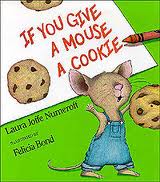
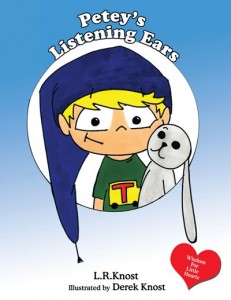
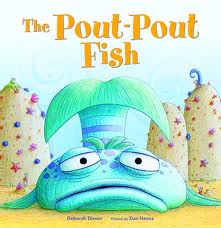
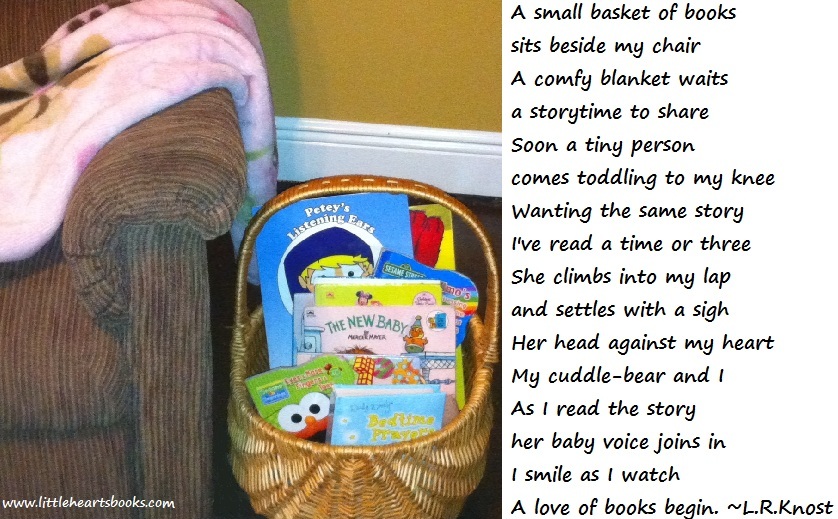

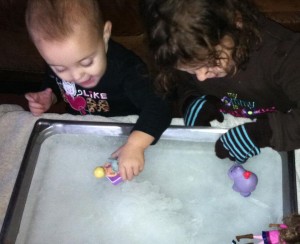
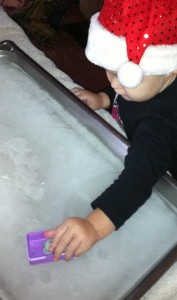
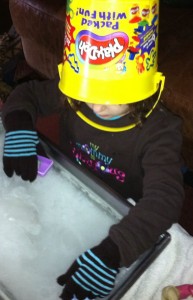
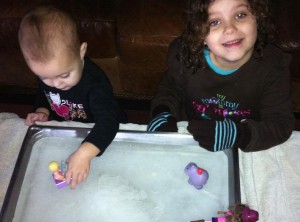







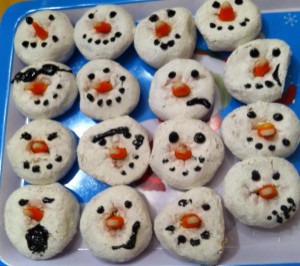


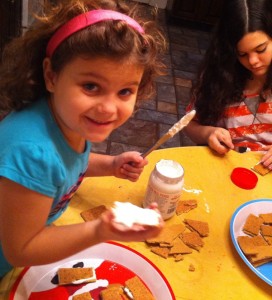


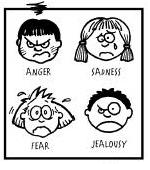
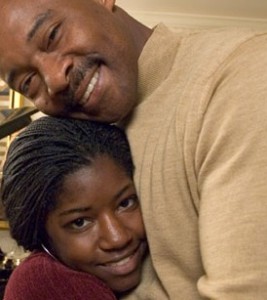












 Breastfeeding Answers Made Simple – Breastfeeding Reporter – Unintended Consequences
Breastfeeding Answers Made Simple – Breastfeeding Reporter – Unintended Consequences
 My Date With Dr. Ferber
My Date With Dr. Ferber How They Do It In… Japan
How They Do It In… Japan






